




Thursday, May 2, 2024
DENTON JENKINS
thedmnews@gmail.com
Construction of classrooms, residence halls and a parking garage keeps pace with a growing student population.
With numerous construction projects underway at the University of Mississippi, facility planners and students alike are looking forward to what is in store for the 2024 fall semester.
Some students have come to view construction as a new norm.
“In a way, it’s a good thing that we have the construction because it’s a positive sign of growth that people want to come to the university,” sophomore history major Nina Poiroux said. “We see that with the increasing student population the campus is going to have to expand even if it means we live with construction projects for a short time. The complaints about construction are really just growing pains that we have to deal with in order to keep the university beautiful and welcoming for students.”
Among the bigger construction projects is the demolition of Kincannon Hall to make way for three residential dorms.
The construction and replacement of Kincannon Hall have been underway since last summer. Dem-
olition of the dormitory, which had been abandoned since 2015, began in August 2023. Since completion of the demolition in Dec. 2023, students have awaited news of the project’s continuation.
During a Jan. 18 Mississippi Institute of Higher Learning meeting, the Board of Trustees approved a budget of $165 million for new student housing.
Chad Hunter, director of facilities planning and university architect, explained that although demolition of Kincannon Hall took longer than expected, the project is on schedule.
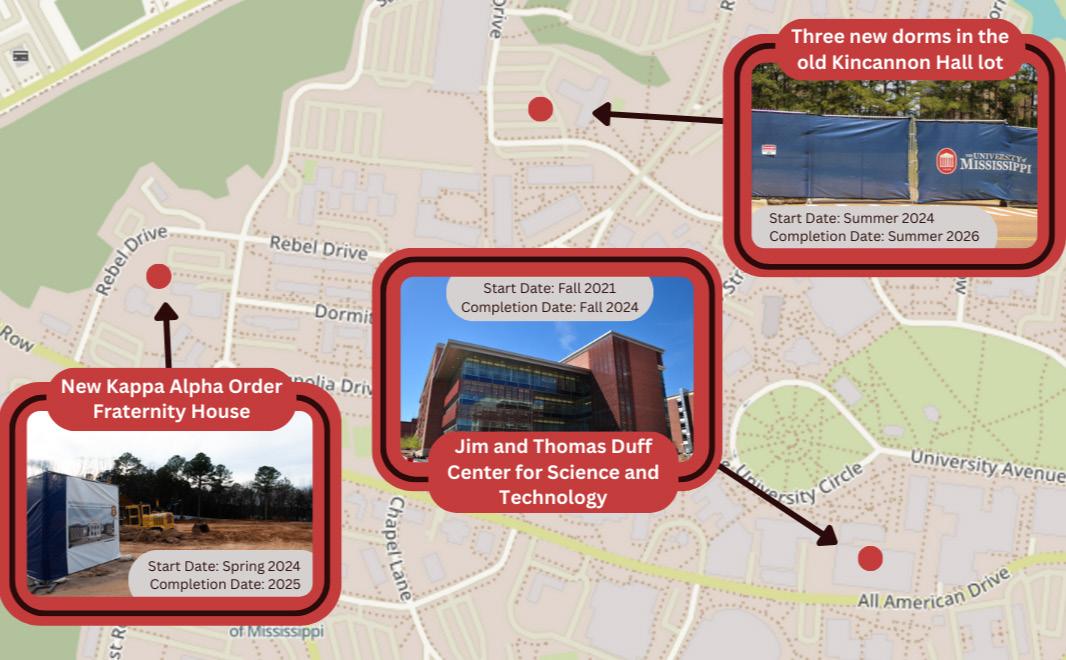
“The plan all along was to take advantage of summer months for both demolition and construction,” Hunter said. “Due to complexities within the Kincannon structure, it didn’t come
VIOLET JIRA thedmnews@gmail.com
It is not yet summer, but students walking the Union Plaza on Tuesday, April 30, were met with the unusual opportunity to write on a giant beach ball. There was no common theme or ideology behind what students chose to inscribe. Some wrote their names. Some wrote words of affirmation. Others expressed political positions.
The intention behind the demonstration, freshman history major Jackson Behuniak said, was to give students a chance to exercise their right to free speech.
“They can write things that we don’t agree with, and that’s their opinion. That’s their free speech. They have every right to do that,” Behuniak said.
Alongside Behuniak, sophomore finance major Musa Thomas facilitated the activity representing
down as fast as we had planned, but we were still able to finish demolition on time. We wanted to get it done by summer 2023, but construction of the new dorms was never intended to be that summer; it was always intended
to be this upcoming summer 2024.” Hunter said construction on the three-building dormitory project to replace Kincannon Hall is to be -
Donna McComb and Maddy Underwood bring a taste of France to campus in the form of macarons.
CLAIRE REYNOLDS thedmfeatures@gmail.com
Grandmother and granddaughter duo Donna McComb and Maddy Underwood have been adding a little sweetness to students’ days in the form of a French delicacy — macarons.
McComb, founder of MatchStick Bakery, has been making macarons for four years, a skill she picked up after illness prevented her from returning to her job. Recently, her 16-year-old granddaughter, Underwood, has taken to the craft.
“I was working for Toyota, and my asthma got so bad they wouldn’t let me go back to work. I started learning and just watching

Choosing a college major is no simple task. Students across the United States consider a variety of factors when making a decision that could define their future careers.
According to a study conducted by the Grand Canyon University Experience team, 19% of Americans reported choosing their major for a guaranteed high income, while 81% selected their field of study for love of the subject. The report also said that Gen Z is more concerned about future earnings than millenials.
The conversation surrounding choice of college major has become particularly relevant in Mississippi. In September 2023, Mississippi State Auditor Shad White released a report titled, “Plugging the Brain Drain: Investing in College Majors That Actually Work.” The report advocates for more “investment in college degree programs with graduates who are likely to obtain a high-paying job in Mississippi.”
According to White’s report, college degrees in education and health professions yielded the highest median income for recent graduates and percent of graduates who stayed in Mississippi after three years. Meanwhile, degrees in business, engineering and biological sciences tended to lead Mississippi college graduates out of the state.
While some may be choosing their major based on passion or financial prospects alone — many University of Mississippi students are finding ways to balance both.
Some students looking for a high future salary may choose the pre-law track.
According to the National Association for Law Placement, the average salary for the class of 2020 law school graduates with a full-time job for at least one year was $102,858. For private practices, the number increases to approximately $130,000. Of the salaries reported, 35.5% said they make a salary north of $100,000.
However, sophomore law studies major Macy Cassidy said her passion for the subject outweighed notions of future financial success.
“I really never thought of the money after finishing school when choosing what major I wanted to pursue,” Cassidy said. “I was more focused on criminology, but then I decided pre-law would be a better major for what I wanted to do.”
Cassidy shared that, while she knows some people are enrolled in the law studies major for the end goal of financial success, she enjoys her studies.
“I do enjoy the classes in my major a lot,” Cassidy said. “They are challenging and do consist of a lot of work, but I feel like I am interested in the subjects so doing the work is not bad.”
Pre-medicine is another common track for students looking to bring home a high salary in the future.
Biology professor Sharday Ewell said that in the science department, many students are pursuing pre-medicine careers with hopes of securing high-paying jobs, despite

“Getting to teach students who genuinely want to learn music and have fun with it (is) a dream. I may not be rich, but I will love what I’m doing.”
- Dekylan Jones sophomore music education major
me of a worthless major,” McNear said. “I was definitely told that, you know, if I don’t add the (pre-medicine) part onto it, people are like, well, what are you going to do with it?”
Sophomore music education major Dekylan Jones ditched worries about income to pursue a passion.
“Originally, I was a math major with a minor in music. I (initially) chose math because I knew that the career choices would be wider. However, I found it quickly boring,” Jones said.
Jones said music brought him peace and a sense of fulfillment.
“Getting to teach students who genuinely want to learn music and have fun with it (is) a dream,” Jones said. “I may not be rich, but I will love what I’m doing.”
four years,” Wadsworth said. Junior marketing and insurance major Kimber Spelts said that while her courses may not seem exciting to the average person, she finds them interesting and in line with her goals for the future.
“My first insurance class was eye opening and made my vision clear for pursuing my career in the insurance industry,” Spelts said. “There’s no doubt the classes are challenging, but they are setting me up for success.”
Assistant Professor of History Alexandra Lindgren-Gibson acknowledged the intimidating nature of changing your educational plan, but encouraged students to find a path they are passionate about.
the field often requiring long hours and many years of school.
Ewell said she can usually tell the difference between students who are truly passionate about their major and those who are not.
Delaney McNear is a freshman at UM. While on the premed track, she has settled on philosophy as her major.
“Being in philosophy, it’s definitely seen as the epito-
“Of course, you’re going to have students who view it as a means to an end. They say, ‘I’ve got to make this score to go to medical school,’” Ewell said.
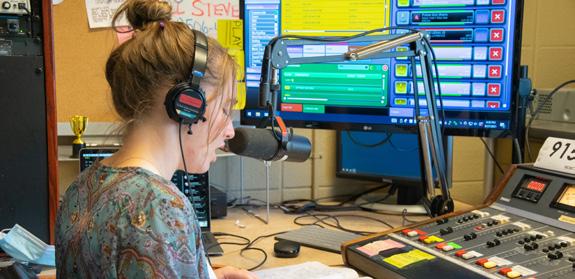

Prioritizing passion for her studies as well, freshman computer engineering major Carson Wadsworth said she was drawn to the career during high school for her love of math and abstract topics.
“The classes that are for my major are the ones I look forward to and have fun with, and the people as well since the classes and labs are much smaller and most of them will be with me all
“If you’re training yourself to do something that you’re just not that into, you’re training yourself for a really long life of being not that into eight hours of your day,” Lindgren-Gibson said. “Ultimately, as long as you get a degree and figure out what you actually enjoy doing with your time and get a job that allows you to do that — whether it’s within the context of the job or outside the context of the job — that is what actually makes for a satisfying life.”



continued from page 1
gin August 2024 and to be completed in summer 2026.
“That project will be three new housing buildings varying in levels because of the topography of the site,” Hunter said. “The intent is to have a variation of different room styles and a lot of student spaces within the buildings as well as a community space similar to the one surrounded by Minor Hall, RH2 and RH3.”
The January 2024 Mississippi Institutions of Higher Learning Board of Trustees Board Book also outlined plans for a new parking garage to accommodate the increased on-campus student population that will result from construction of the three new dormitories.
The project, which was allotted $50 million from the IHL, will add 1,331 parking spaces in a new parking garage located immediately west of the existing Residential Parking Garage adjacent to Kinard Hall.
Construction of the new parking structure is scheduled to begin in fall 2024 and coincide with the construction of the new dormitories.
The project has an expected completion of summer 2026.
Another ongoing major project is the Jim and Thom-
continued from page 1
videos, and it took me about two years until I jumped up in it and started making macarons,” McComb said. “This year (Maddy) has started helping me.”
McComb has put time and effort into mastering her culinary skills, and what was once a pastime has become another source of income. After initially selling her cookies online, McComb started taking her products to local farmers markets three years ago.
“It sort of just became a hobby that went into a business. We started going to the Pontotoc Farmers Market. We did that for a little over a year,” McComb said. “Then we came over to Oxford and … started selling there. We go to farmers markets,
as Duff Center for Science and Technology on All American Drive. Construction on the 202,000 square feet project began in fall 2021 with a budget of $175 million dollars.
Construction is set to be completed this summer with an anticipated opening in the fall 2024 semester. Classes that will be held
campus at the intersection of University Avenue and Grove Loop will be unveiled May 3 with a dedication on May 14, according to Jacob Batte, director of news and media relations for the university.
Construction of a renovated softball complex is also underway. Demolition of the existing complex be-
“It is an exciting time at the (university) with unprecedented student growth and campus development.”
- Chad Hunter director of facilities planning and university architect
in the new Duff Center, labeled CSTI in MyOleMiss, are already listed on the website for student registration.
“I think a lot of the current STEM buildings like Coulter and Shoemaker have been in need of renovation,” Maylen Janovich, a sophomore psychology major, said. “I’m really excited to take classes in the Duff Center since I see it as the university investing in their STEM students. If you can walk into a new building to take a class, I think it motivates you to want to succeed.”
A sign meant to welcome students and visitors onto
mainly, and a few festivals.”
The duo from the Pinedale, Miss., area have managed to turn their hobby into a high-demand product. For the days they spend on campus, parked in front of the Farmstand food truck on Business Row, they usually bring around 250 macarons of 10 different flavors. Rarely do they leave with any of the cookies they brought to sell.
“The kids really seem like they always want something sweet. We pretty much sell out every Wednesday when we’re here,” McComb said. “Some of (the students) you’ll see come back three or four times.”
McComb and Underwood are disproving the adage that going into business with your family is bad for familial relationships.
“We spend a lot of time together. We’re a close family,” McComb said. “(Maddy) runs the business when she gets here. She sets it up and she
DAILY MISSISSIPPIAN EDITORIAL staff
KHARLEY REDMON editor-in-chief dmeditor@gmail.com
CLAY HALE managing editor dmmanaging@gmail.com
CAROLINE MCCUTCHEN copy chief thedmcopy@gmail.com
CAMERON LARKIN news editor thedmnews@gmail.com
RAEGAN SETTLE assistant news editor thedmnews@gmail.com
CLAIRE REYNOLDS arts and culture editor thedmfeatures@gmail.com
SYDNEY STEPP assistant arts and culture editor thedmfeatures@gmail.com
TEDDY KING sports editor thedmsports@gmail.com
RUSS EDDINS assistant sports editor thedmsports@gmail.com
JUSTICE ROSE opinion editor thedmopinion@gmail.com
ASHTON SUMMERS photo editor thedmphotos@gmail.com
ANTONELLA RESCIGNO assistant photo editor thedmphotos@gmail.com
20,000 square foot addition of a loading dock and storage area will precede renovations to the existing 13,000-square-foot structure.
While academic and administrative buildings are undergoing renovations, Greek houses are also receiving significant upgrades in the coming months.
The Kappa Alpha Order fraternity is building a new house across from its current location on Rebel Drive. The new facility is expected to be completed in 2025.
grated marketing major and Alpha Omicron Pi member, said. “I don’t know yet what the inside is going to look like, but I know there will be more room and the outside is going to give it a newer look, which is exciting.”
The Alpha Phi and Alpha Delta Pi sororities are also working on additions to their existing houses. According to Director of Fraternity and Sorority Life Jess Turac, these houses will finish their renovations in early 2025.
gan in November 2023. The project, part of the university’s broader CHAMPIONS. NOW. campaign, has a budget of $30 million and is expected to be completed sometime next season.
“This is a multi-stage project that we are working on around the softball season,” Hunter said. “They’re currently using the field for play, but the rest of the project — such as seating, concession stands, etc. — will be next season.”
Multi-stage renovations to the University Data Center on Guyton Drive are set to be completed in 2027. A
does what she wants to do. I just back off and let her go.”
The macarons are made in small batches by the pair in McComb’s kitchen. Underwood described how she helped McComb complete the process.
“I fill (the macarons) and (my grandma) bakes the shells,” Underwood said.
Underwood is also instrumental in designating the flavors that MatchStick bakes — ranging from more typical fruit flavors to wilder concoctions like root beer or bubblegum.
“My favorite is peach. It’s not too sweet,” Underwood said. “I also love blueberry and wedding cake.”
On the other hand, McComb likes a more sweet and salty combination.
“I like maple bacon. I also like, gosh it’s hard because so many of them are so good, but salted caramel is a really good one, too,” McComb said.
ASHLYNN PAYNE design editor thedmdesign@gmail.com
MILO GILDEA
ERIN FOLEY assistant design editors thedmdesign@gmail.com
AVERY THOMAS social media manager thedmsocialmedia@gmail.com
RHEAGAN SKELTON assistant social media manager thedmsocialmedia@gmail.com
WATSON LEE multimedia editor dailymissmedia@gmail.com
HAILEY AUSTIN online editor thedmonline@gmail.com
“I’m excited for the new house since the one we are in now has been the KA house for a very long time,” Quintin Hunter, a sophomore political science major and member of Kappa Alpha Order, said. “The new KA house is supposed to be the biggest fraternity house at Ole Miss. I hope it’s built before I graduate, but even if it’s not, it will be great for people joining in the future.”
Once construction of the new Kappa Alpha house is complete, the Pi Kappa Phi Fraternity will move into the existing Kappa Alpha house.
The Alpha Omicron Pi and Alpha Chi Omega sororities are also planning renovations to their houses. The timeline for the rebuilds are still being considered by the Fraternity and Sorority Facilities Committee.
“We’ve waited a long time for (the new house),” Janet Colomani, a sophomore inte-
Furthermore, Turuc shared that plans are being considered to renovate the Beta Theta Pi and Phi Delta Theta fraternity houses, but those projects are in the early phases with no set start date.
“These renovations and projects are exciting for the fraternity and sorority community as we continue to see growth in fraternity and sorority membership on our campus,” Turuc said.
The university is in a constant growth state at the moment, and it seems as though the ongoing and future construction projects reflect so.
“It is an exciting time at the (university) with unprecedented student growth and campus development,” Chad Hunter said. “We are happy to be completing construction on several projects soon and beginning even more projects to support student academics and enhance the campus experience.”
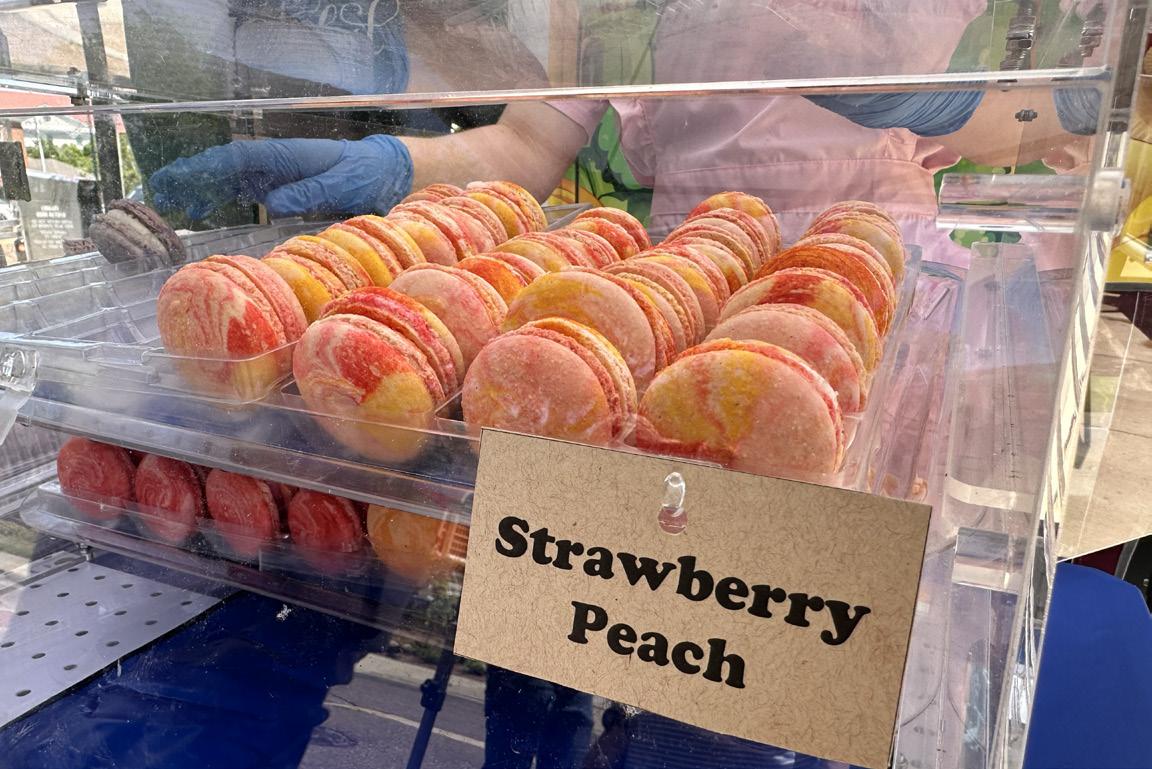
MatchStick Bakery can be found on campus every Wednesday from 11 a.m.–3 p.m. or until they sell out. On Tuesdays, the ladies of MatchStick can be found at the Oxford Communi-
S. Gale denley student media center
LARZ ROBERTS Director of Student Media
DENNIS MOORE Editorial Director
ROY FROSTENSON Assistant Director/Advertising
OWEN PUSTELL Advertising Sales Manager dmads@olemiss.edu
SALES ACCOUNT
EXECUTIVES
Dylan Sheu
Lola Phillips
Kendall Scott
ty Market from 3:30–6:30 p.m. Starting May 4, they will resume their weekly setup at the Pontotoc Farmers Market from 6:30–11 a.m.
continued from page 1
UM’s chapter of Turning Point USA. TPUSA is a national organization that advocates for conservative politics at educational institutions. While the national organization has faced controversy, the student-led university chapters are geared toward education and discussion, according to their constitution and bylaws.
“We’re trying to get the word out that we’re an organization on campus for those who believe in American values created in our Constitution, like free speech,” Thomas said.
Early in the afternoon, the ball accumulated dozens of in-
scriptions from students and university community members who passed by the Union Plaza.
Behuniak emphasized the importance of freedom of speech.
“We (U.S. residents) have the ability to criticize our government,” Behuniak said. “Some countries don’t. If you criticize Russia’s government, you could get put in prison for that. That’s why this is important.”
The Russian Constitution protects both free speech and freedom of the press. However, Russian authorities are notorious for their suppression of anti-war speech through criminalization of things like “false information.”
Thomas pointed to the ways in which free speech and conversation are connected.
“In order to find truth and action you have to have dialogue,” Thomas said. “That requires freedom of speech — it requires people to say what they actually believe without the consequences of government suppression.”
Though who/what has free speech and the circumstances to which it extends are debated, freedom of speech is protected by the First Amendment to the U.S. Constitution. In recent years, many have pointed to an increase in threats against free speech in the U.S.
“Things have been censored, for sure, and that’s a problem,” Behuniak said. “I believe that people have the right to express their opinions as long as it doesn’t cause harm to anybody — like as
long as you’re not threatening somebody, you should have the right to say whatever you think is necessary to be said.”
Thomas agreed with this sentiment.
“There’s a growing amount of censorship not only in the media world but in places like this, where people are not comfortable saying what they actually believe. We need to combat that by doing stuff like this — advocating for the Constitution. Advocating for freedom of speech,” Thomas said.
At a time when protests are ripping across college campuses in the United States concerning the Israel-Hamas war, freedom of speech is a contentious topic. The beach ball reflected a myriad of things on stu-
dents’ minds as global turmoil persits and finals week looms.
“I miss One Direction,” “Bush did 9/11,” “Good luck on finals,” “Free Palestine,” “Free the hostages,” “I love being gay,” “Jesus loves you,” and “Michael B. Jordan is the hottest man alive” are just a few of the many messages students left on the ball.
“They get to experience something that’s fun and that they don’t really get to do on a normal basis,” Thomas said. “It also allows them to think about the First Amendment and our Constitution.”
Luke Keener, a senior business marketing student, left a note.
“It felt pretty cool — just taking a Sharpie and writing on a beach ball,” Keener said.










From timberlands to seashores, Mississippians balance expanding the economy and protecting the planet.

Throughout the Southeast, foresters and activists are coming together to restore America’s longleaf pine forests. The Nature Conservancy reports that longleaf pines once dominated the coastal plain, covering more than 90 million acres. Now there are just 5.2 million acres.
In Mississippi, more than two million longleaf pine seedlings have been planted in the past several years, according to the Natural Forest Foundation. This state-wide replanting has restored about 4,000 acres of natural habitat, stretching across the DeSoto, Bienville and Homochitto National Forests.
Greene County timber company owner Dillon McInnis is part of the movement to restore the longleaf species to Mississippi’s landscape.
“The fauna in the forest, the flowers, the different grasses and things that were there back at the turn of the century are coming back with some practices we’re implementing,” McInnis said.
During most of the 19th century, longleaf pines were primarily used for turpentine production — a process involving extracting essential oils from the tree. By the 20th century, railroad construction and planting of other invasive species in the area harmed the entire coastal plain’s longleaf pine habitat. Today, only about 3% of the country’s original longleaf forests remain.
“That tree is fire-dependent to reproduce naturally and so, at the turn of the century, this whole country was probably 90% longleaf trees because fire kept maintaining them,” McInnis said. “When we came along and started planting loblolly pine (trees), we messed everything up and it took over the other pine trees.”
According to the Mississippi State Extension Service, loblolly pines grow rapidly and were
‘We’re gonna hit that wall:’ Bay St. Louis battles nature and insurance
“We’ve had so many disasters that we’ve started living off of disasters,” Lonnie Falgout said on the porch of his raised home while swatting away the evening gnats.
A Cajun from Horneville, La., Falgout served as a city councilman of Bay St. Louis from 2013-2017, representing the sixth ward. He helped to rebuild the town in the aftermath of Hurricane Katrina, which killed 58 people in the small community.
“This area was totally wiped out clean,” Falgout said. “It looked like somebody came in here with a broom and wiped it, SEE

PAGE 7 Bolstering the line of defense: Barrier islands undergo restoration projects Reese Anderson
PAGE 7 Renewable energy in Mississippi’s Sunflower County video
PAGE 7 Crawfish crisis podcast
PAGE 8-9 From processor to plate: Seafood industry faces environmental, economic challenges Kharley Redmon
PAGE 9 Agriculture adapts to changing climate Caleb Bowman
PAGE 10 Timber industry has room to grow Kala Nance
PAGE 12 Balancing economic growth and the environment in Mississippi’s logging industry Alice Ann Hollingsworth
PAGE 12 Mississippi timber: protecting jobs and the planet video
PAGE 12 Crop diversity podcast
PAGE 12 About the project
FORESTS PAGE 11
continued from page 5
and all you saw was slabs.”
Hurricane Katrina devastated Bay St. Louis and the entire Gulfport-Biloxi metropolitan area in 2005, but the town has since recovered to almost double its pre-Katrina population.
“When Katrina hit, we were approaching (a population of) 8,000 people. After Katrina, we dropped down to like 5,000 people because everybody took off with no place to live,” Falgout said. “As we sit here in 2024, Bay St. Louis is on the pinnacle to be 15,000. That’s unheard of. We never thought this little town — ‘a place apart,’ that’s our nickname — would be sitting at 15,000.”
As the population grows, Bay St. Louis and the Mississippi Gulf Coast are inundated with flooding emergencies, largely due to increasingly frequent and severe hurricanes.
“We’re going to hit that wall, sooner or later. We’ve gotta remember, Camille was in 1969 and Katrina was in 2005. That’s a long, long time in between,” Falgout said. “We hit that wall, and Katrina came and hit us in the face and we just slid down back in the hole.”
Floods increase in Hancock County
Emergency Management Agency
Director Brian Adam manages Hancock County, a 485-square-mile area. Approximately 150 square miles of this land are classified as low-lying, meaning they are at or below sea level, including the town of Bay St. Louis.
Born and raised in Hancock County, Adam has served as the EMA director since 2003 and worked as a firefighter for 20 years before assuming his current position.
“You have to want to be in this business,” Adam said. “You have to really want to do this job.”
Adam said he has noticed a stark increase in floods since he began his tenure.
“It’s definitely increased. We can go anywhere from five to 25 to 35 or so (flooding events a year). But on average, probably 20. But we’ve had a lot more than that,” Adam said.
Flooding from storm surges produced by powerful hurricanes is the most severe type of emergency that Adam manages. Because the county has an east-facing shore, it is exceptionally vulnerable to strong winds.
“As (the storm) is coming toward us, being an east-facing shore, it’s pushing (the water) in. It doesn’t have to impact
us directly before we have water. If it’s coming across or straight in, we’re still gonna get water,” Adam said.
The most common type of flooding in Bay St. Louis is coastal flooding caused by high tides and strong southeastern winds, and these events can happen at any time of year. Additionally, heavy rains can cause flooding farther north in the county along streams that eventually flow into low-lying areas.
“We have certain areas that flood on heavy rains that don’t flood in coastal flooding. We have a lot of bayous and creeks running through Hancock County. When you have heavy rains up north, everything goes downhill,” Adam said.
Although the problems facing the community are obvious, people in Bay St. Louis are divided on why flooding events have become worse over time.
“I can sit here and tell you that sea level rise is a problem, this is a problem, that’s a problem — but all I can really tell you is that we’ve noticed the increase,” Adam said.
According to the National Oceanic and Atmospheric Administration, the sea level in the Bay St. Louis area is rising by about one inch every two years. While it took 22 years for the sea level to rise by six inches in the area previously, scientists now predict that it will rise by another six inches in only 15 years.
Skeptics question climate change
Residents of the Mississippi Gulf Coast are among the most skeptical of climate change in the United States, with research from Yale University showing that the average number of residents in Hancock, Harrison and Jackson County believing that climate change exists stands at 60% –12% below the national average. Only 47% of people on the Mississippi Gulf Coast believe this climate change is man-made.
Biloxi Mayor Andrew “FoFo” Gilich has noticed environmental changes in his lifetime, but he is skeptical of the extent of scientists’ ability to understand or correctly assess the severity of climate change.
“This past year, we hit a number of 100-degree plus days in a row. But in the ‘80s we experienced the same thing. I’ve been around a long time, and I’ve seen a lot of hurricanes,” Gilich said.
“The one thing I understand, we don’t know as much as we think we know.”
At this point in time, Gilich does not believe that his community is under any sort of existential danger from climate change. He expressed his faith in God, not climate models produced by scientists.
“It’s just the most beautiful day of the year right now in Biloxi. We have our faith in the man up above, and he

has a plan, and I don’t know that we understand enough to predict (the extent of climate change),” Gilich said.
Bill Toups, a resident of Bay St. Louis, believes the problem lies with the New Orleans levee system.
“As far as sea level rise, we don’t see any of that. This water level has been the same for 30 years,” Toups said. “The only difference we see is with the south-east winds, and they built all of those levees in New Orleans East and St. Bernard, and there’s nowhere else for that water to go and it kind of falls over this way. As for sea level rise, that’s a bunch of baloney, we don’t see it.”
Emergency Management Agency Director Brian Adam believes the issue is multifaceted.
“People always wanna blame one thing or another — it’s a combination. I have been interviewed so many times about, ‘Oh, it’s gotta be because of the levees.’ Well, I’m sure (the levees) have something to do with that (increased flooding), but it’s not just that,” Adam said. “It’s the barrier islands, it’s sea level rise, it’s a lot of things.
Lonnie Falgout believes that people in the Bay St. Louis community that deny the relevance of other factors beyond the New Orleans levee system continue to ignore the severity of the situation in parts of Bay St. Louis that are prone to flooding. At times, Falgout and others in the community are unable to exit their neighborhoods due to flood waters.

“If they didn’t see the water, they will say, ‘Oh, it didn’t happen.’ But they didn’t think about the nine or 10 days we were stuck back here,” Falgout said. “You’ve got to put the answer in front of people nowadays.”
As more people move in and purchase homes in the community, strong storms and increased flooding events continue to drive up insurance rates or prompt insurance companies to stop writing policies in high-risk areas altogether.
“Insurance has risen over the years, and after Katrina, a lot of people had the trouble of trying to figure out if (their damage) was wind versus water, and to me, I don’t know how you can say it’s one or the other, because both happened,”
Adam said. “And that’s where I have an issue with the insurance companies.”
According to research by Capgemini, an information technology company, 74% of insurance executives worry that climate change will exacerbate risks and impact their own cost-benefit analysis when deciding to provide coverage.
Falgout believes insurance companies took advantage of policyholders in the aftermath of Hurricane Katrina.
“All of these insurance companies pulled out,” Falgout said. “We knew that they were blaming the wind and not the water. So they walked away.”
After two whistleblowers let on to the unethical business practices, the government sued State Farm Fire and Casualty Co. for $100 million.
“It’s going to get to the point where the government’s not going to have the money to bail us out,” Falgout said. “The insurance company’s gonna walk away because they can. It’s only gonna take people to unite together and say, ‘We’ve had enough.’ Yes, you’re gonna hit that wall. It’s gonna happen.”
Falgout believes maintenance and construction are the best ways to protect his community and mitigate rising insurance rates. He thinks that by proactively addressing the floods through infrastructure, Bay St. Louis can buck the trend and drive rates down. Falgout suggested several projects that would mitigate flood damage, including building a retention pond to offset millions of gallons of flood waters and rebuilding the Long Beach seawall.
“Lake Pontchartrain has a 27mile seawall. They don’t have erosion problems and it’s because of the sea walls protecting them,” Falgout said.
“These fools back in the ‘40s, ‘50s and ‘60s – old men like my grandfather –were smart enough to say, ‘We’re gonna put a stop to this.’ And it stopped.”
According to research, seawalls do prevent erosion along their lengths, but erosion typically increases in areas beyond the walls’ ends. So, unless they are built according to a coordinated plan, seawalls simply pass along the effects of the waves, which end up doing more damage at the first unprotected spot.
Falgout believes that addressing climate change and improving infrastructure is important to his community, because the next Katrina could always be right around the corner.
“Here we are trying to regroup again,” Falgout said. “And then Ida came, and then Inez came. We keep getting hit. Sooner or later, we’re going to get the big one again.”

A chain of narrow islands just off the Mississippi Gulf Coast are perpetually battered by wind, waves and the Gulf of Mexico’s 10-mm-peryear rise in sea level — among the fastest rates of sea level rise in the world.
As the mainland coast’s first line of defense against hurricanes and other tropical activity, barrier islands are particularly vulnerable to the effects of climate change. Barrier islands are naturally at risk of erosion because they are composed of constantly shifting sediments.
“Barrier islands are fragile, they’re dynamic and they’ve been subject to a lot of man-made forces, the biggest of
REESE ANDERSONhave marshes, which are able to hold more water in, so one impact is that (barrier islands) take the brunt of the storm. Through increased water levels, they can kind of retain the storm surge.”
The islands pay a price for offering this protection, most visibly on the Gulf Coast when 1969’s Hurricane Camille split Ship Island in half, carving a 2.4-mile breach known as the “Camille Cut.” Over time, natural sediment deposits brought the two halves within a quarter-mile of each other until Hurricane Katrina expanded the breach again to 3.5 miles in 2005.

This prompted the National Park Service to begin the second-largest restoration project in its history. Completed in December 2020 in cooperation with the U.S. Army Corps of Engineers, the $300 million-project used dredged sediment to make Ship Island whole again.
According to Shadle, reconstructing Ship Island not only protected coastal communities from hurricane damage, but it also restored the habitats of endangered barrier island species.
or they might take it and dump it off in deep water,” Harris said. “They also sometimes take it to a landfill, and it’s gone forever.”
Harris explained that repurposing dredged sediments creates new habitats for plant and animal life.
“When we create a restored marsh … it also keeps the sediment in the system. And the sediment flow in the system is a natural process,” Harris said. “We build it to the elevation where marsh grows, because ultimately what we’re trying to do is create valuable coastal habitat.”
The Beneficial Use Program is currently working on two barrier island restoration projects — one on Cat Island and one on Deer Island, both of which are largely owned by the state of Mississippi. While the Deer Island project has been greenlit and will commence in late 2024, the Cat Island project is larger and entails a more intensive permitting process.
“(The Cat Island restoration site) is a 660-acre site, compared to a 66-and-ahalf-acre site at Deer Island. The funds for Deer Island were secured a while back,” Harris said. “It just takes a little while because you have to get the permit before you even worry about construction.”
Harris said that such projects are an ongoing battle against climate change and general erosion.
for the island because it’s protecting the island from those erosional losses.”
One of the benefits of restoring barrier islands, particularly along Mississippi’s coast, is maintaining them for tourism and recreational use.
Ship Island is the most heavily visited of the state’s barrier islands, attracting 42,000 people in summer 2023.
“That 42,000 number is just people brought out by the ferry,” John Bernstiel, supervisory park ranger for the National Park Service’s Resource Education Division in the Mississippi district, said.
“People also go out on private boats, they rent boats, they charter boats, and it’s hard to capture those numbers.”
Part of Bernstiel’s job is ensuring that visitors to Ship Island and the William Colmer Visitor Center are aware of the risk they pose to coastal ecosystems.
“The best thing (visitors) can do is to pay attention to things like shorebird closures and stay away from those areas. They should stay in the areas that we set aside for public use, which are most of the islands,” Bernstiel said.
The service has mandated climate change messages for its programs, including those on Ship Island.
which occurring now is climate change, particularly sea level rise associated with climate change,” Robert Wiygul, who practices environmental and natural resources law in Ocean Springs, Miss., said. “That’s just the basic physical equation that when water gets warmer, it expands.”
Barrier islands play a large role in protecting the coastline from hurricanes. Most importantly, they receive the brunt of a hurricane’s storm surge, retaining much of the water and sand brought on by the storms. Elizabeth Shadle, a biological technician for the Mississippi district of Gulf Shores Islands Seashore National Park, elaborated on this.
“Barrier islands provide coastal protection and reduce storm impacts. Hurricanes are going to hit that barrier island first. They can hold a lot of sand and sediment that can help limit the impacts when a storm first comes from the gulf and is going towards the coast,” Shadle said. “A lot of the barrier islands
Fossil fuels, such as coal, petroleum and natural gas have long been the primary sources of power in homes across the U.S. Now, renewable energy is changing the energy landscape in Mississippi.
NewsWatch Ole Miss reporter Celeste Lay takes you to Sunflower County where you’ll find the largest solar farm in the state.
“A lot of the (barrier island) animals are endangered, so we wanted to mitigate the reduction of their habitat,” Shadle said. “We also monitor our natural resources, including sea turtle monitoring and looking at nests. We monitor shorebirds, looking at different solitary nesters, as well as large colonial flocks.”
Habitat conservation is one of the foremost goals for coastal restoration projects in general. The Office of Coastal Resource Management, which operates under the Mississippi Department of Marine Resources, uses dredged sediments to rebuild eroded marshland along and within the Mississippi Gulf Coast.
“We do this in order to offset ongoing coastal losses of tidal marsh, which is a very valuable fish and wildlife habitat,” Deputy Director of the OCRM Jared Harris said. “That’s why we try to restore that marsh, because the marsh is what makes the Mississippi Sound so productive.”
Harris leads the Beneficial Use Program, which restores marshland with sediments dredged from the Mississippi Sound.
“Historically, dredged sediments have been viewed as a waste. So, for instance, if they’re going to dredge a shipping channel, they might just pump it out in open water,


“We’re trying to restore marshlands, because even without hurricanes you lose them due to erosion anyway,” Harris said. “Are you going to see some erosion there as well over 15, 20 years? Probably. But it still provides an extra sort of resilience
“I think most people are aware of (climate change), but it’s probably not at the top of their minds when they’re actually out there enjoying the barrier islands,” Bernstiel said. “They’re out there to recreate, and we hope we get a little bit of their time to educate them and turn them into stewards for the environment.”
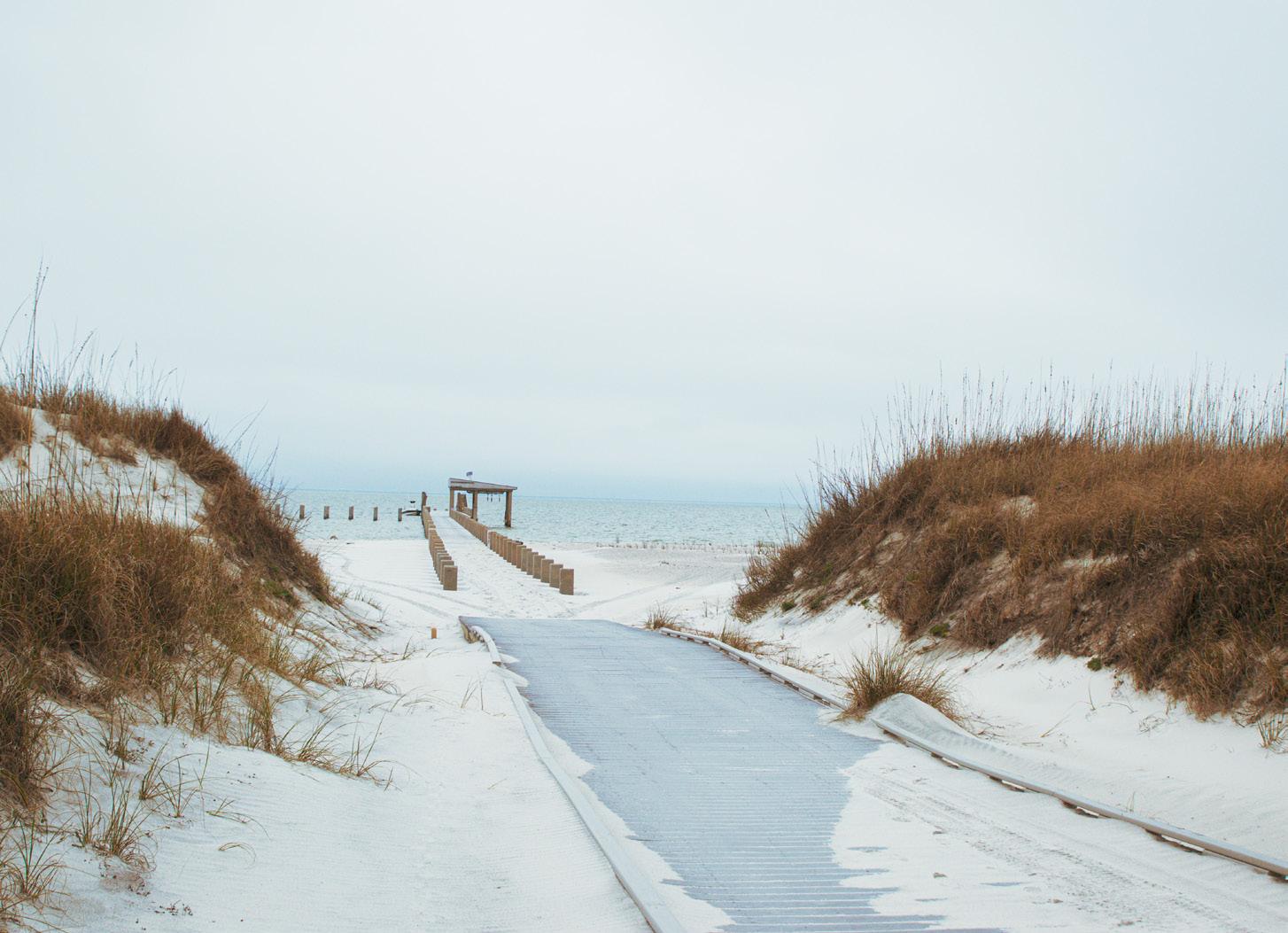
A combination of drought and extreme weather has led to a dramatic decrease in crawfish availability, impacting the economy and culture in the southern United States. Mississippi State University’s Raylen Ladner explores the issue in this Rising Tides, Rising Temperatures podcast episode.



Many things draw people to the Mississippi Gulf Coast each year.
Miles of beautiful beaches; Mardi Gras celebrations throughout March; museums, casinos and aquariums.
But topping the list of tourists’ reasons to travel to one of the charming coastal towns — good seafood.
However, environmental and economic challenges have threatened the stability of the Mississippi Gulf Coast seafood industry in recent years. While seafood processors, distributors and restaurateurs in Bay
from Mississippi State University.
In 2019, the spillway was opened twice in one year – first on Feb. 27 and again on May 10 for an unprecedented total of 123 days.
“Nineteen, when it happened, was horrible,” Marquar said. “It killed everything, it killed the oysters, it moved the crab out (and) it moved the shrimp out. Fish, everything was gone. Bad, bad algae blooms started with the 2019 opening.”
The cause for the 2019 openings was increased precipitation, according

as many seafood distributors like him ship around the country.
“We bring them back, we distribute them (and) we bring them up to Baltimore,” Pomes said. “We got trucks, 18 wheelers, (and) they go to Baltimore and distribute them.”
Pomes’ perspective on climate change is similar to Marquar’s.
“I don’t pay attention to climate change,” Pomes said. “Legislation, you know, you gotta watch what they’re doing on Capitol Hill.”
Although Mississippi and Louisiana are five years out from the 2019 openings — with just one additional opening in 2020 — economic recuperation is still a work in progress.
Marquar said that, although he has not made up for all of his losses, lawmakers and organizations such as the Mississippi Department of Marine Resources have been fighting to help keep the seafood industry afloat.
“The Mississippi Department of Marine Resources has done a very good job trying to talk to the federal agencies (saying), ‘You guys are killing the Mississippi Sound. We’ve got to do something.’ A lot of livelihoods are here: fishermen, us as processors, distributors (and) the box companies we buy our boxes from. It’s a trickle effect,” Marquar said.
payouts — ranging from $12,000 to $108,598.60 — to commercial fisherman, seafood dealers, offbottom oyster aquaculture harvesters and licensed live-bait fisheries.
Although many consider the $2.9 million a win for Mississippi’s seafood industry, some lawmakers such as Sen. Roger Wicker (R-Miss.) are critical of how long it took for the federal government to allocate these funds.
“This funding is helpful, but it does not make the impacted businesses whole. It should not take years for disaster funds to trickle in,” Wicker said in a press release after the funding was announced. “I will keep working to reform the fisheries disaster declaration process so the funds can be delivered to communities in a shorter time frame. I am committed to helping Mississippi recover no matter how long it takes.”
While still in the process of financial recuperation from the 2019 openings of the spillway, Marquar is worried about another phenomenon’s impact on the seafood industry — imports from countries such as Ecuador and Indonesia.
According to another 2020 report from Mississippi Today, the effects of imported seafood, particularly shrimp, are something the industry has been struggling with for years.
St. Louis have felt the impact, they have different perspectives on what is the largest threat to not only the hungry tourists’ iced-down plates of raw oysters but also one of the Mississippi Sound’s most vital industries.
Kendall Marquar, a seafood processor who owns Pinchers Seafood in Bay St. Louis was quick to point out what has been the biggest environmental challenge.
“We process shrimp, crab and oysters,” Marquar said. “We unload all the local shrimp (and crab) boats here. The oysters are gone because of the spillway disaster.”
Marquar is referring to the 2019 openings of the Bonnet Carré Spillway. The Bonnet Carré Spillway, located in Louisiana, is designed to divert flood waters from the Mississippi River to Lake Pontchartrain and eventually the Mississippi Sound.
While saving Mississippi and Louisiana communities from flooding, the influx of fresh water and pollutants into the saltwater sound causes harm to wildlife, according to a report
to the U.S. Army Corps of Engineers informational page on the spillway. The United States Environmental Agency said that increases in inclement weather in Mississippi – including flooding –are likely a result of climate change.
“The 12 months between July 2018 and June 2019 were the wettest ever for the U.S., the third time that record was broken just in 2019,” a 2020 Mississippi Today report about the effects of the 2019 spillway openings said.
Despite this, Marquar said that climate change is not among his concerns.
“I don’t believe climate change is hurting us,” Marquar said. “Mother Nature is going to take care of her own species, in my opinion. This year, we had very good salinity and water (and) had very good tide ranges. We never had an algae bloom this year.”
The impact of the spillway openings extend beyond the Mississippi Sound.
Chris Pomes is a seafood distributor and shipper from Louisiana who has been buying Mississippi crab for 20 years. Pomes noted the wider impact of the spillway openings,
Most recently, the U.S. Department of Commerce allocated $2.9 million to help with the effects of the 2019 spillway openings. This funding is part of a $42 million package offering financial compensation for fishery disasters in states including California, Oregon and Alaska. In 2021, Gov. Tate Reeves initiated the process of obtaining this funding by writing a letter to the U.S. Secretary of Commerce Gina M. Raimondo.
Details for allocation and administration of the funds will be worked out in coordination with the state, according to a National Oceanic and Atmospheric Administration press release. While the specifics for this funding are to be determined, past programs have included payouts to those affected by the 2019 openings.
In November 2023, the Mississippi Department of Marine Resources announced the availability of $6.57 million for
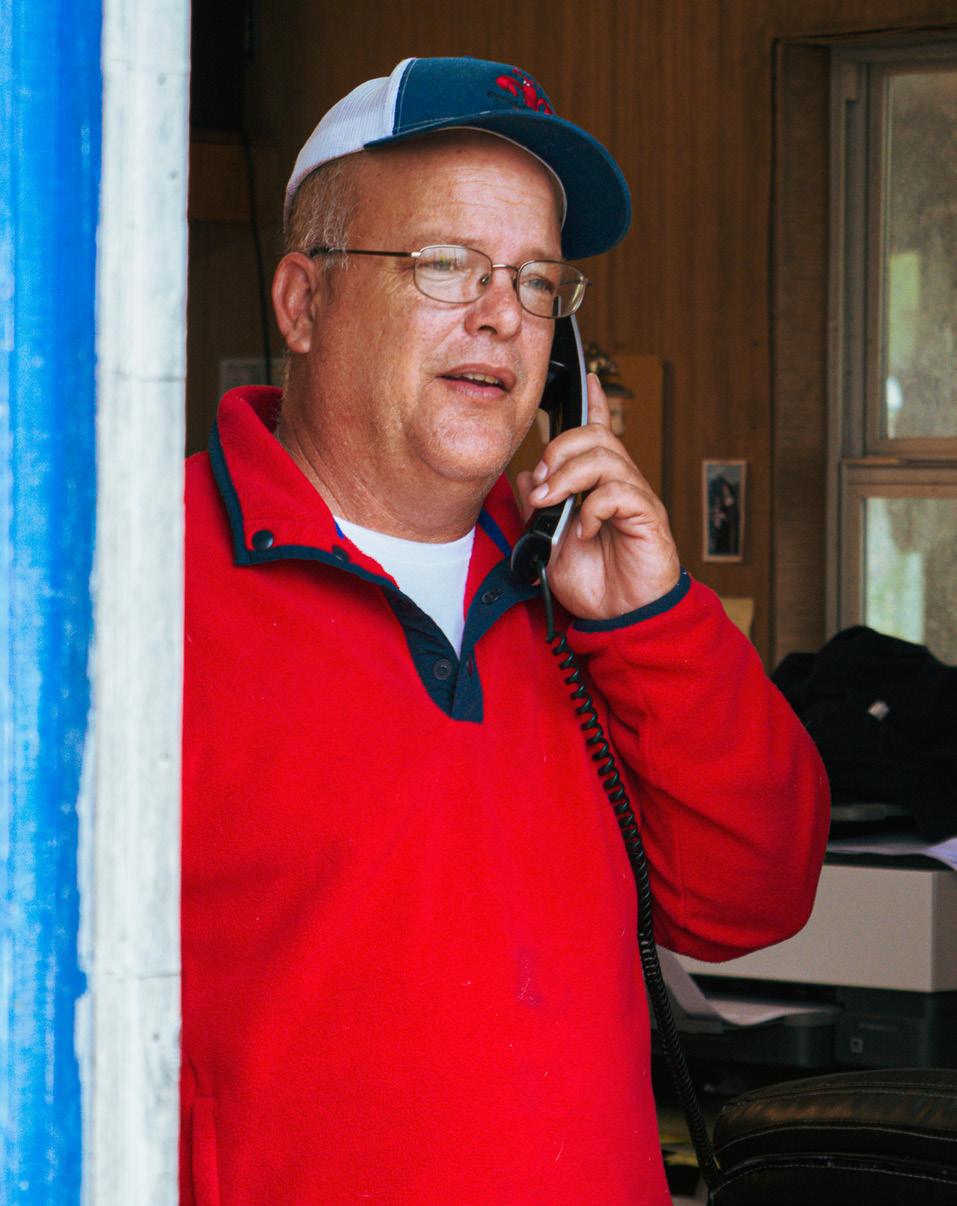
“Shrimp were very, very cheap this year,” Marquar said. “A $1.10 for 16/20s. That’s very cheap — we’ve never seen that.”
With prices so low, Marquar hopes legislation will level the playing field.
“We have some very good organizations trying to stop it,” Marquar said. “Hopefully they can get some tariffs or something put on where our fishermen have a fair playing ground.”
Like the impacts of the spillway, the impact of imports also extend beyond the Mississippi Sound, according to Marquar.
“Our big processors, they sell all over the country,” Marquar said. “They’re saying it’s affecting them on the restaurant side, because (imports are) cheaper. Even with our prices that we are paying the fisherman. … You just can’t compete with them.”
Theodore “Teddy” Macke, originally from New Orleans, is the owner of MacBe Seafood and Cafe in Bay St. Louis, which serves a variety of seafood dishes.
Although Macke is now on the restaurant side of things, he used to be a commercial fisherman and talked about changes in the shrimping industry over the years.
“When I was a young man, I actually
CALEB BOWMAN
sold my shrimp at the dock higher than what they get for them now. And that’s 50 years later,” Macke said.
The number of shrimping fleets in the region also has decreased. According to the same Mississippi Today report, there were 1,017 shrimp fleets in Mississippi in 2002 and 254 in 2018. This decline is due to a combination of imports, climate change and other environmental disasters, including the spillway openings, the report said.
“When I was a young person my dad would go shrimping out at Lake Borgne, and he could literally walk across the boats opening day,” Macke said “Now you go out (on) the opening day and you don’t see a boat.”
MacBe’s serves a combination of local and imported seafood.
“We’ll get them both,” Macke said. “The wild-caught fish, for some reason, tastes better. Same with the shrimp. The imported stuff is kind of flavorless at times.”
Macke highlighted some challenges that Marquar and Pomes did not touch on — namely the COVID-19 pandemic.
“We’ve been in business for about seven years now,” Macke said. “The first three years in business are rough and then COVID hit, so we’re finally getting our legs back under us after that.”
Macke also talked about the risk of going into the restaurant industry. When he first wanted to get into the
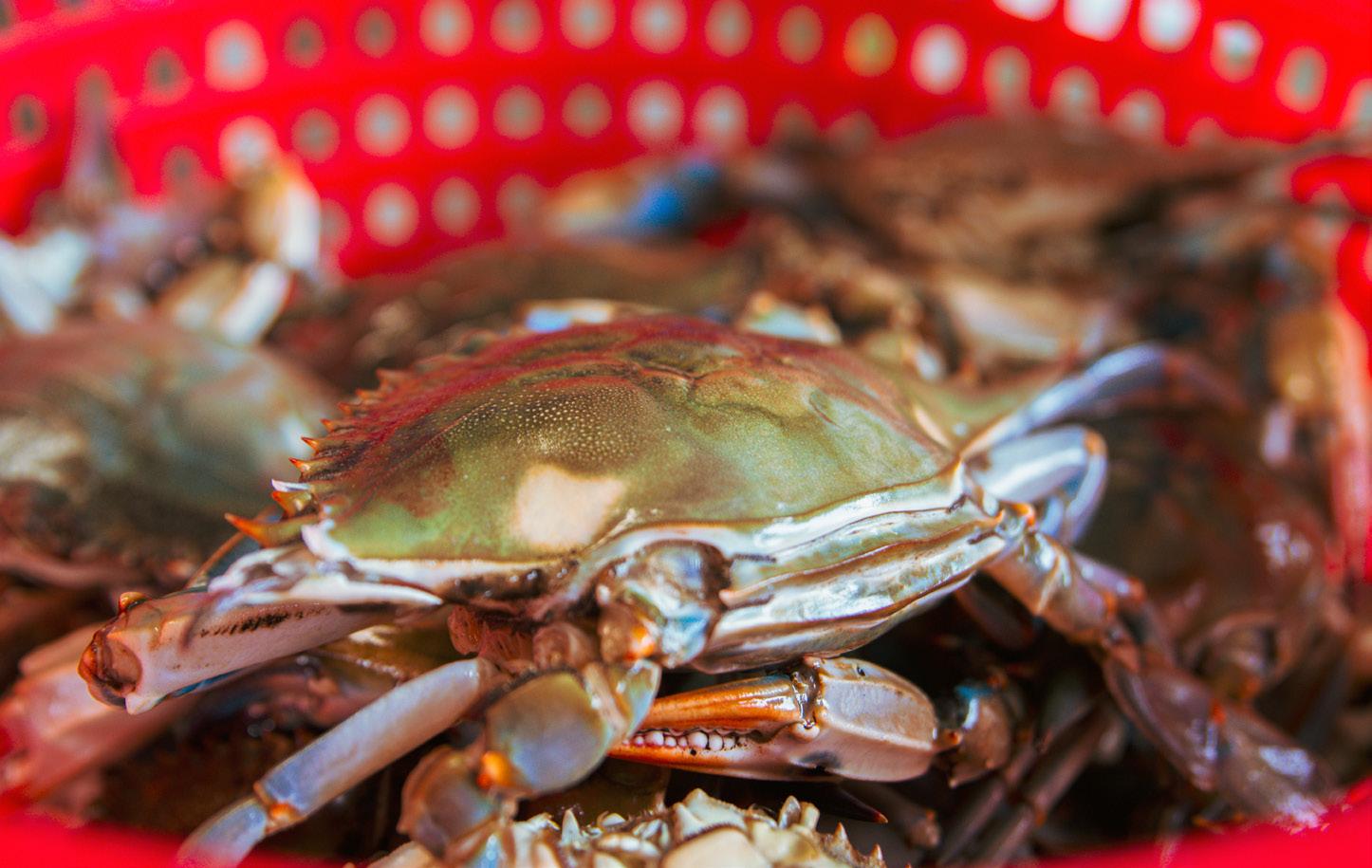
restaurant industry, his financial agent advised against it due to the high rate of restaurant failure both before and post COVID-19, Macke said.
While Macke has not yet been deterred from his seafood endeavor, the working conditions of the industry have made Pomes weary to get others involved.
“My son is involved in my business. I didn’t want him to be involved,” Pomes said. “The hours — we work
seven days a week every day. So I didn’t want the life that I lived for him because of the hours, but he likes it.”
Pomes said that all of these factors — environmental, economic or otherwise — culminate into a constant uncertainty.
“You never know this business — it’s on and off,” Pomes said. “You make money during the summertime and you’re losing it all winter. It’s like a never ending cycle.”
Agriculture is the Magnolia State’s largest industry, generating $9.72 billion on roughly 34,700 farms across 10.4 million acres in 2022, according to the Mississippi Department of Agriculture and Commerce.
It’s a high-risk industry and farmers rely on organizations such as the National Oceanic and Atmospheric Administration to produce seasonal forecasts. With this information, farmers can change their planting strategies to cope with variations in weather patterns. Farmers may plant crops earlier or later in the season depending on when the last frost occurs and how warm the soil is. They also may change how crops are placed, adjusting the depth of seed placement and the distance between adjacent rows of crops, to help the crops better withstand climate extremes.
At Mississippi State University, Assistant Professor in Agricultural Climatology Prakash Jha and his team
are researching additional ways to help farmers manage the impact of climate change. They are currently developing the Mississippi System for Disease Early Warning. The system uses climate forecasts, remote sensing and crop models to predict the productivity of crops in an upcoming growing season. This information will be passed on to farmers who can use it to create field-management strategies.
Jha said planting climate-resilient crops is one option for farmers in the face of climate change. Drought-tolerant and heat-tolerant crops are being developed across the globe that can mature under conditions that would usually cause stress in plants.
Irrigation strategies can alleviate a lot of the detrimental effects posed by heat stress, but irrigation relies on the storage of groundwater beneath the earth’s surface. Climatologist Jha said Mississippi’s groundwater storage is being depleted due to increases in the amount of irrigation for crops like soybeans and cotton.


Despite these issues, MSU Assistant Professor of Agronomy Jagmandeep Dhillon said temperatures in Mississippi are not yet significantly harming the state’s crop production.
“Definitely, the way we are heading, it’s going to be a huge negative impact, but when it’s going to happen, that’s debatable,” Dhillon said. “What we have found: We are not there yet. Our temperatures haven’t hit that point after which it will be negative.”
Brandi Karisch, MSU research professor in the Department of Animal and Dairy Sciences, said extreme weather events like droughts can also be problematic for cattle producers and that a current drought in Mississippi has had a negative impact on livestock production.
“We’re not used to not having any rain, so from a livestock producer side
of things, not only does that affect the grass that we grow for the cows to eat, but on top of that, it’s getting so harsh in some areas – where typically we would water some cattle out of ponds – they’re having to haul water to cattle because ponds are drying up,” Karisch said.
To address livestock production issues, animals are being bred to be heartier in climate extremes. Karisch said many farmers now own a species of cattle that is more tolerant to extreme heat. MSU researchers also indicated that artificial shades are often used to protect cattle from extreme heat in areas where there is less natural shade, and farmers may work their cows early in the morning to keep them from getting too hot. Karisch said MSU also recommends rotational grazing, reducing the number of cows in a pasture and no-till seeding practices that maintain the soil’s integrity.
For now, agronomist Dhillon said that Mississippi agriculture has been able to avoid a lot of the negative impacts of climate change by using effective management strategies, but it is not a given that this trend will continue.
“Can we stay ahead of the curve?” Dhillon said. “That is what we are trying to do.”
“All you have to do is make a drive through (Greene County) to see that our most abundant resource is trees, primarily pine trees,” long-term resident of Greene County, Miss., Danny Box said.
Box worked for the Natural Resources Conservation Service Agency within the U.S. Department of Agriculture for 33 years. He retired in 2019, but he decided
and sustainable energy source. As of March 5, the company was preparing to file for bankruptcy protection.
“Mississippi has been home to Enviva operations for over a decade — since 2010 to be exact — when we opened our first plant just outside Tupelo in Amory, which continues to operate today,” Maria Moreno, Enviva’s vice president of communications and public affairs said in an email statement.
Two of its eight plants are located in
the 15 largest U.S. wood pellet facilities have seen fires or explosions in the last 10 years. Twenty-one additional mills have been reported to emit excessive greenhouse gasses and pollutants. McInnis and Box would like to see other companies that rely on timber move into the area.
“What we hope is that we attract a company that would build a sawmill,” Box said. “These facilities represent, roughly speaking, a $300 million

to 100 jobs that pay good salaries.”
Box was contacted via phone and email in late March for an update on the status of the effort to attract a sawmill to the area, but he did not reply. However, if past experience is any indicator, the effort may not be easy. According to a study done by the Trent Lott National Center at the University of Southern Mississippi, the majority of the state’s timber industry jobs are “in the supply side of the industry, such as growing trees and logging, which do not produce value-added goods.”
In addition, Mississippi exports about 40% of its timber to companies in other states that make products such as construction materials, furniture and paper.
“This means that Mississippi is leaving a great deal of domestic value and production unrealized due to not having enough wood processors and wood product manufacturers,” according to the report.
‘Wise use of forest resources’
Attracting companies that provide economic stability and satisfy the concerns of environmentalists is challenging, but the Mississippi Forestry Association states that it specifically focuses on advocacy that is “conducive to the development and wise use of forest resources for the long-term benefit of all.”
John Auel, manager of the association’s tree farm and professional logging programs, said that forestry contributes billions of dollars and job opportunities to the state. Auel has worked in the industry since 1996 and said that “a healthy forest is a well-managed forest.”
Managing forestland involves a process known as “thinning” in which some trees or parts of trees are removed to make room for the growth of others. Logging companies do much of that work but need a place to sell their timber to make the process sustainable.
Auel sees the link between a healthy economy and thriving forests.
to return to work for Greene County as the economic development director in 2021. “We’re doing things here in economic development to try to create a better environment for timber growers,” Box said. “(We want) private landowners to have more opportunities to market their products since now there’s limited options for them when they … harvest, and those that do the harvesting have limited options on where to deliver that product to. The more opportunities we create, the better for our citizens.”
According to Mississippi State University researchers, families and private companies own almost 70% of the forestland in the state, so the development of the timber industry has the potential to affect more than 150,000 people and large corporate owners.
In 2012, Dillon McInnis’ family opened Timberline Forestry, LLC in Leakesville, Miss. Randy McInnis, Dillon’s father, won Logger of the Year through the Mississippi Forestry Association in 2022. The family’s love for nature has a strong impact on how they handle their business. However, Dillon McInnis said Mississippi forestland owners need more places to sell their products.
“We have such a supply of trees here. That is supply and demand,” McInnis said. “When we’ve got more trees than they need, the price stays cheap on our end.”
One corporation that buys timber from McInnis has had a rough go of it in Mississippi. Enviva Inc. — one of the world’s largest producers of timber products — takes timber from sellers across the world and produces industrial wood pellets that serve as a renewable
Mississippi, including one in Lucedale, located in George County, which neighbors Greene County. According to a Wall Street Journal report, Enviva estimated that the price of powerplant fuel would keep climbing, which would in turn increase demand for its wood pellets, but that did not happen.
“Looking back, construction on Enviva’s Lucedale plant supported approximately 400 cumulative jobs and represented an investment of more than $215 million in George County by Enviva,” Moreno said.
“Now fully operational, Enviva has hired approximately 90 full-time employees for the Lucedale plant and supports nearly 300 jobs across the George County community.”
If Enviva fails, suppliers like McInnis and the people the company employs will suffer. However, some environmentalists prefer that companies like Enviva disappear altogether, arguing that pellet manufacturers create air pollution that can cause health problems in nearby communities. They also say pellet fuel contributes to climate change as much as or worse than coal.
According to the Environmental Integrity Project, at least eight of
capital investment, which, for a county like Greene, improves our situation from a tax revenue standpoint, and typically these sawmills create 80
“If you don’t manage the forest then it gets overstocked. … (We’ve) basically found that forest management is our best way to keep these resources healthy … it also benefits biodiversity, wildlife and everything else,” Auel said.
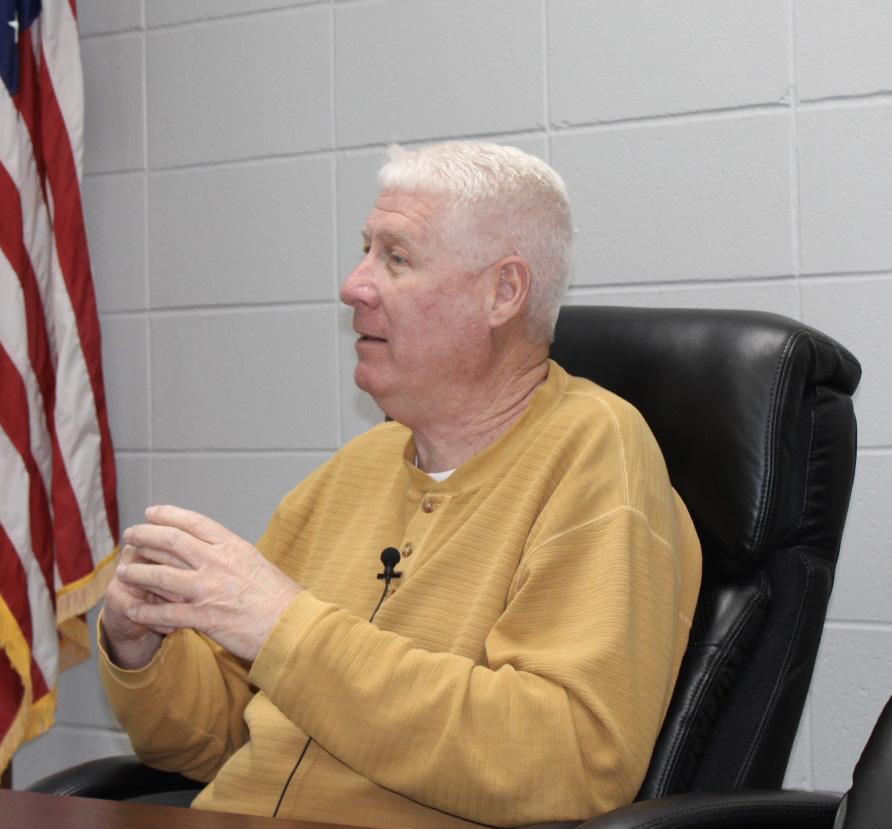
continued from page 5
planted to help produce more lumber and paper products. Longleaf pines are slower growing, but they are also resistant to fire, less susceptible to insects and disease and hold their value better in the lumber market.
Because longleaf pine trees still exist, it is reasonable to assume that they can be restored to their
previously dominated habitats.
Longleaf pines are more resilient towards negative impacts of climate change than other southeastern pines, according to the National Wildlife Federation’s website.
Longleaf pine forests also benefit wildlife, like the Louisiana black bear and wild turkey, and species considered endangered, such as the dusky gopher frog, gopher tortoise, red-cockaded woodpecker and black pine snake.
“Some of the practices we implement, we try to help the wildlife and try to promote (clean) air and water quality,”
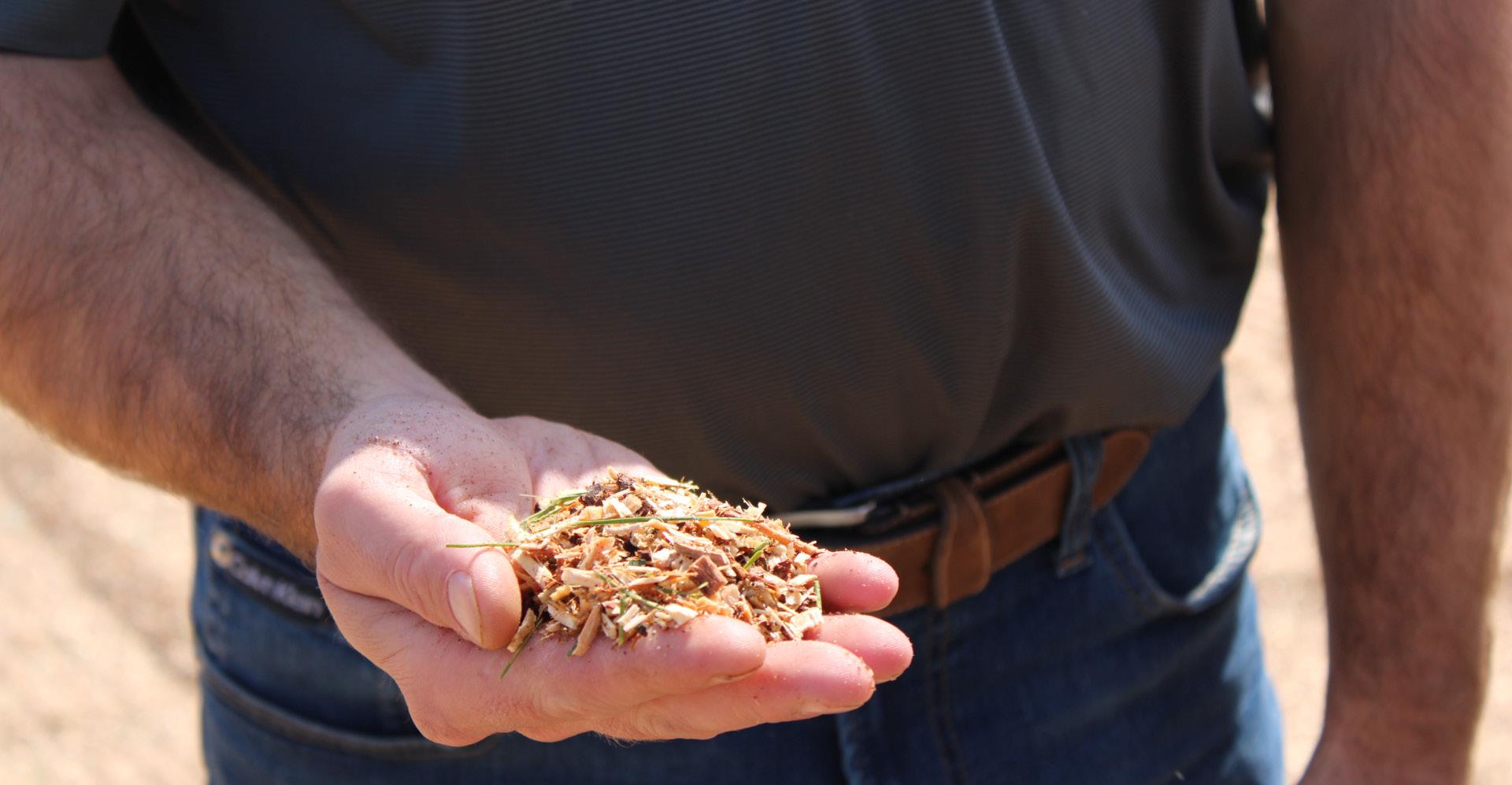
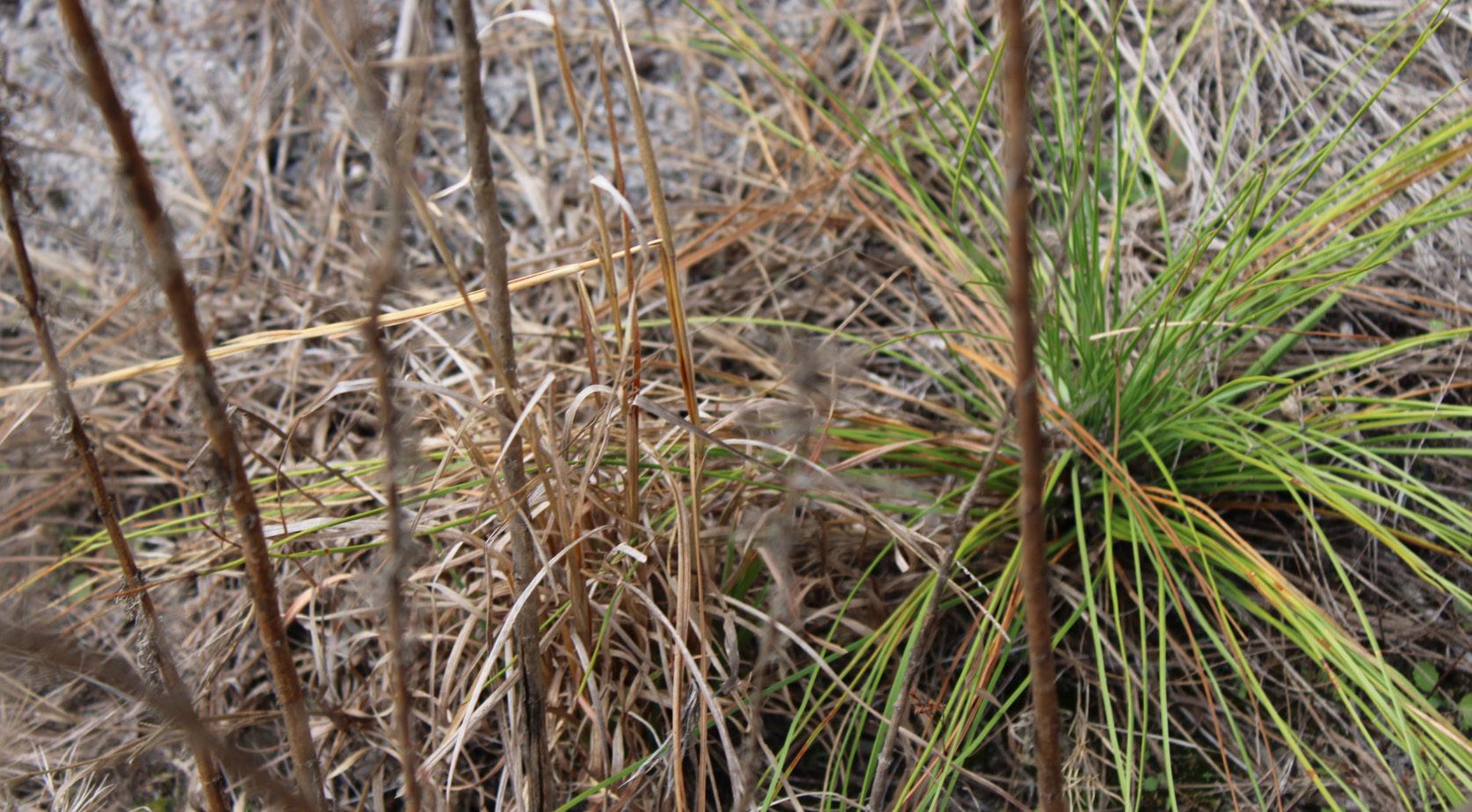


level of
McInnis said. “I’m passionate about that myself. … I like to hunt, and if we’re taking care of the land, we have game to hunt. In turn, we help endangered species and other plants that very well could not be common to see.”
Managing forestland involves a process known as “thinning” in which some trees or parts of trees are removed to make room for the growth of others. Logging companies do much of that work but need a place to sell their timber to make the process sustainable.
John Auel, certification programs coordinator for the Mississippi Forestry
Association, sees the link between a healthy economy and thriving forests.
“If you don’t manage the forest then it gets overstocked. … (We’ve) basically found that forest management is our best way to keep these resources healthy. … It also benefits biodiversity, wildlife and everything else,” Auel said.
The push-pull between people who say addressing climate change must be the priority and those who want greater economic prosperity will likely continue. Auel says the solution lies in those groups working together.
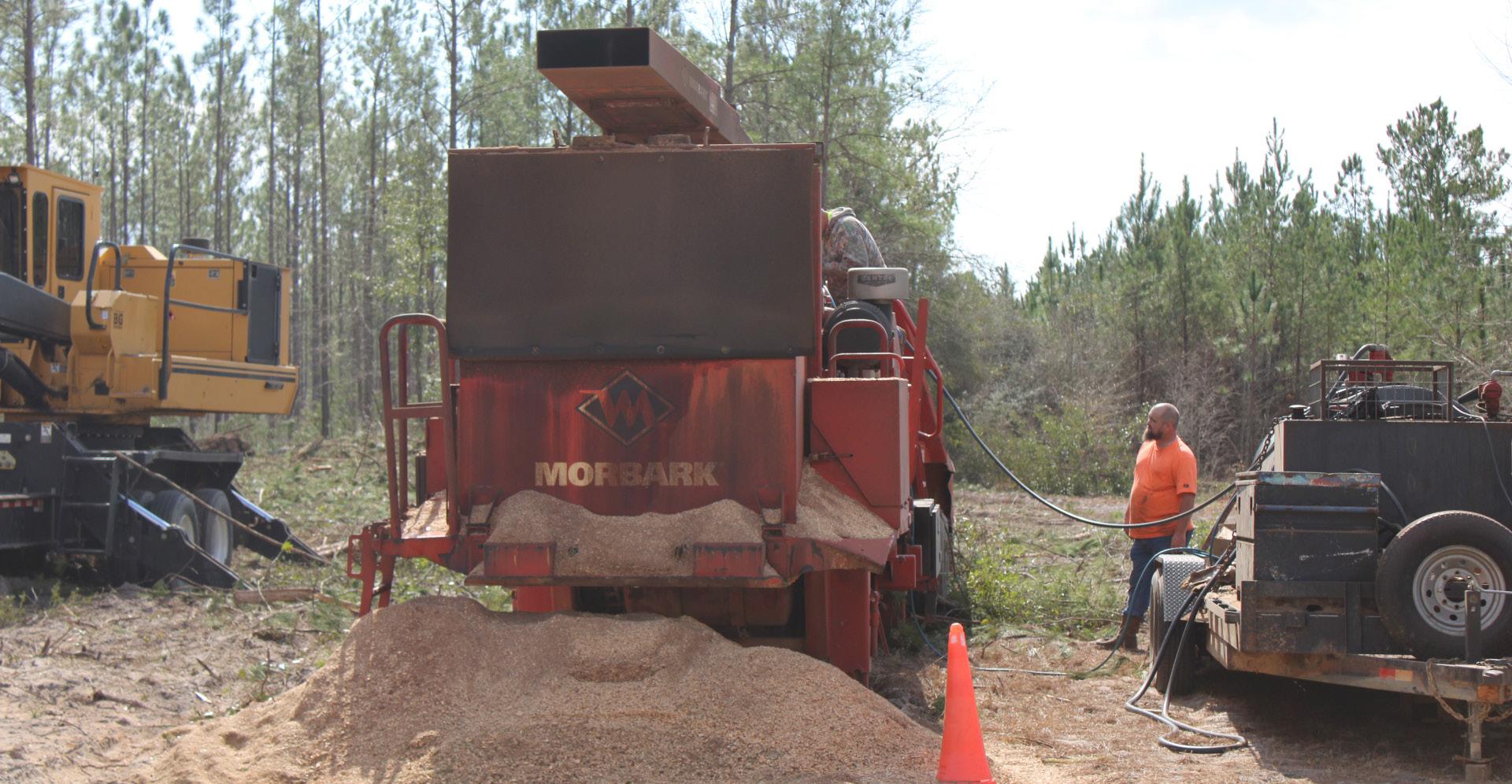
A wood chipper, belonging to the Timberline Forestry, LLC, helps turn chopped pine trees into wood chips. These wood chips are sold to various companies, who in turn produce lumber-based products.

of fully matured longleaf pines. These trees will be cleared soon to produce wood chips to sell for lumber products. The area will then be replanted, after its clearing, to continue the pine restoration project.

The McInnis family in Greene County, Miss., has been ingrained in the timber tradition for generations. Standing at the forefront is Dillon McInnis, a man who not only oversees the family’s timber operations but is also deeply passionate about the land on which he works.
“I love the woods. I spend every day in them, and, yes, we cut trees down, but right here in Mississippi, we’re just farmers,” McInnis said. “While we’re growing that crop of trees … we try to help the wildlife (and) try to promote air and water quality.”
The McInnis family has owned and operated D&R Logging, Inc. and Timberline Trucking, Inc. since 1982. The company employs about a dozen workers and another 20 subcontractors.
McInnis said he and his company aim to be environmental stewards of the forest.
“Through the Mississippi State Extension Service, all of our loggers have received some training on best management practices,” McInnis said.
The sustainable approach to logging includes conducting controlled burns and selective planting. These methods not only support the timber industry but also enhance the habitat for wildlife, including game and endangered species, and foster a balanced ecosystem.
But the timber industry faces significant challenges, including the threat of pine beetles, the impacts of drought and the aftermath of natural disasters like tornadoes.
Christine Fortuin, an assistant professor in the Mississippi State University forestry department, studies the toll that catastrophic weather events can take on forests in the South.
Forests account for 65% of Mississippi’s total land use, generating $12.79 billion in revenue and creating more than 70,000 jobs, according to the Department of Forestry. NewsWatch
Ole Miss reporter Cody Farris profiles a family-owned timber company in Greene County, Miss., as they balance the need for profits with environmental protection.
“We are, as you know, seeing increases in the intensity of storms,” Fortuin said. “So the intensity of windstorms, of tornadoes, of hurricanes, of all those things — those kinds of events can really have a severe impact on forests.”
Fortuin considers the winds generated in these situations to be the largest climate-related threat to Mississippi’s forests, and she wants to help landowners do something about it.
“I started with developing some models of tornadoes and hurricanes in Southern forests to begin to predict what the effects are going to look like,” Fortuin said.
From there, Fortuin hopes to look at what variables give a forest more resilience to climate change.
“Hopefully, we can get a lot more specific about wind events and planting densities and timing and that sort of thing to help landowners make better plans to mitigate those kinds of potential catastrophic impacts,” Fortuin said.
McInnis said climate change is not a large concern for him right now.
“I’m not sold on climate change. I’m not denying it either by any means, but I think if there’s something happening it is going to be long term,” McInnis said. “I think it’s moving so slow that we haven’t seen it here.”
What does cause him worry is the economic landscape with high insurance costs and market dynamics that often leave logging companies bearing the brunt of price fluctuations. Even when the price of lumber increases, McInnis said logging companies do not necessarily make more money.
McInnis shared healthier markets will ultimately result in healthier forests. Although the demand for wood products rose significantly during the
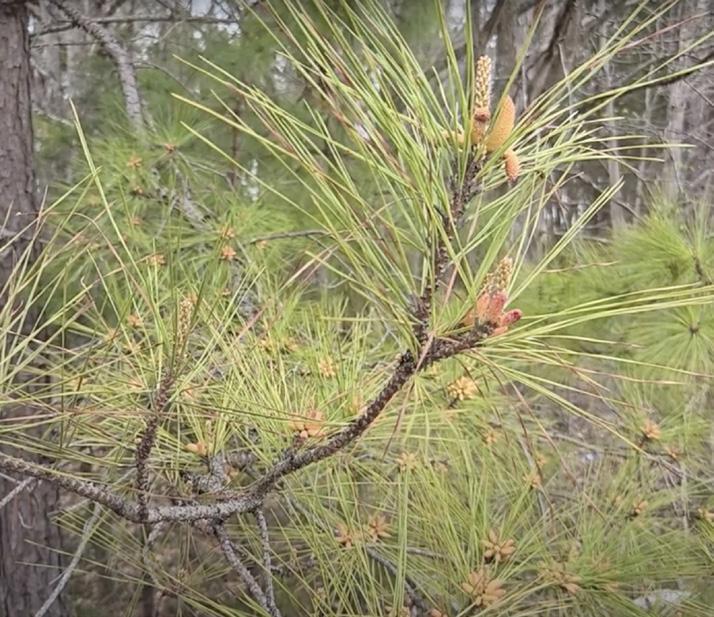

Climate change is a topic of paramount importance and considerable controversy. There are those who deny climate change is occurring and some just aren’t sure. However, most scientists say we can decrease global warming and slow climate change by modifying certain human behaviors, such as burning fewer fossil fuels and chopping down fewer forests.
In a comprehensive year-long investigation, students delved into the realities and uncertainties of climate change’s effects on our state. “Rising Tides, Rising Temperatures,” an eightpage special report published in the Daily Mississippian in November 2023, focused
pandemic years, McInnis said sawmills reap the profits from this increase rather than landowners and logging companies.
With more than enough supply of lumber, the mills can set raw timber prices low.
“We have tons of wood growing in South Mississippi in this area right now,” McInnis said. “We’re outgrowing what the mills are using. So we need a little bit more of a place to consume the products.”
The introduction of government-funded carbon credit programs — a new development in the industry — presents both opportunities and challenges for loggers.

While aimed at promoting carbon sequestration — the process of capturing and storing carbon dioxide found in the atmosphere — these programs can impose restrictions that McInnis said may inadvertently hinder sustainable forestry practices.
McInnis voiced concerns about the overall health of forests if these programs limit essential activities like thinning, which is crucial for biodiversity as well as forest resilience.
Fortuin said that Mississippi is already doing quite well with carbon uptake, which is the amount of carbon dioxide produced versus that which is removed from the atmosphere.
According to the 2023 National Climate
Crop diversity isn’t just about adapting to climate change; it can also help mitigate its impact. Mississippi State University’s Taylor Howard has more in this Rising Tides, Rising Temperatures podcast episode.
Assessment, Mississippi is at the top of all 50 states in terms of carbon uptake, thanks primarily to the state’s forests. Mississippi’s forestry industry continues to evolve with improvements in management practices that address soil erosion and enhance the overall health of the forests. It is a source of pride for many, including McInnis, who cherishes the opportunity to work alongside family and friends in a business that’s not only a livelihood — but also a legacy.


on the work of activists, government officials, businesses, and researchers who are dedicated to making the state’s citizens aware and prepared for climate change.
In this semester’s special edition, we share the stories of Mississippians who are experiencing the direct consequences of climate change, whether they acknowledge that fact or not. We traveled to the coast to explore what many say is the state’s biggest climate threat – sea level rise and its impact on residents, tourism and the seafood industry. We went deep into the state’s timber country to better understand the balance between protecting jobs and protecting the planet, and we again focused on solutions to what
may seem an insurmountable challenge.
This initiative is a collaborative effort between the University of Mississippi’s School of Journalism and New Media, The Daily Mississippian, the Sally McDonnell Barksdale Honors College, alongside the Mississippi State’s Department of Communication and The Reflector. Through the articles, videos and podcasts provided online, we hope you gain a deeper understanding of how climate change is impacting our state and its citizens, and recognize the significant contributions of these dedicated student journalists.
At a time when the expectation is that college students approach their higher education like it is a job, it is difficult to imagine that students would also take on the additional burden of working during their time in college.
Labor force participation among college students is declining nationwide. According to the Bureau of Labor Statistics, 42.4% of full-time students had jobs in 2022, compared to 51.8% in 2002 and 45.7% of students in 2012.
Still, many students at the University of Mississippi’s Oxford campus hold down at least one if not multiple jobs during their time as students. While some students work because they want to, others work because they have to. Most describe the balance as hectic but manageable.
Clara Beth White is a junior philosophy and public policy leadership double major. In addition to her educational obligations, White is a hostess at a local boutique hotel and a worship leader for her church.
“I’m also very involved on campus, so I keep a very detailed planner,” White said.
White is a member of the Ole Miss Band, choir and a sorority.
“I keep a running to do list and plan my days out every day from when I wake up to when I go to bed. I write in my free time so I’m actually able to have some. And also just knowing my limits is something I’ve had to learn too,” White said.
Like White, other student workers emphasized the role that planning plays in balancing the demands of school, a social life and a job.
“I actually have three jobs,” junior criminal justice and psychology ma-

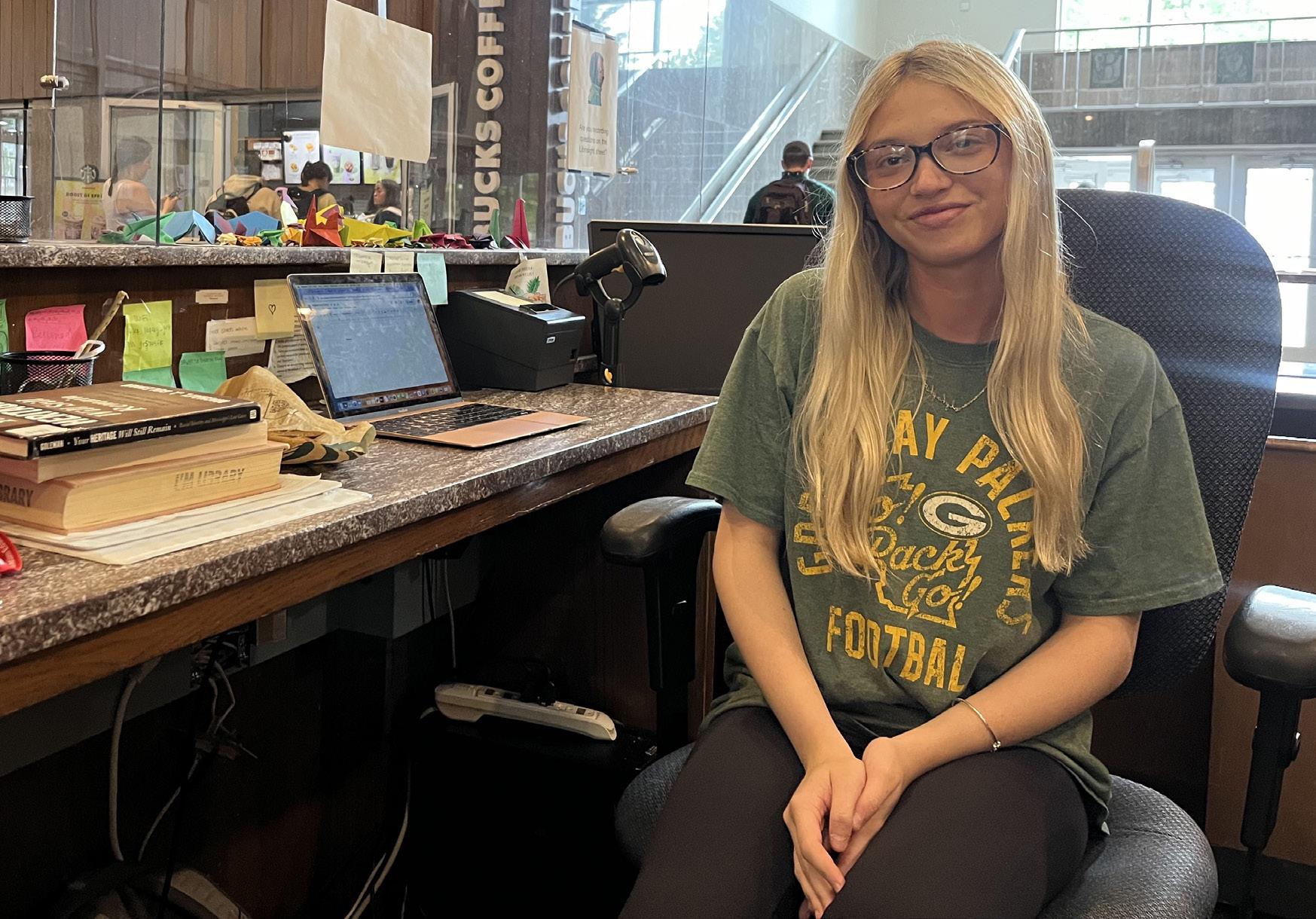
jor Tiana Hough said.
Hough works as a residential assistant on campus, for parking solutions company BestParking and at a fast food restaurant in her hometown. She works a minimum of 20 hours a week and as many as 25.
“It’s super hard. It’s definitely hard having to pay for school and what-not, but as long as you plan everything out thoroughly and set up your schedule, it’s manageable,” Hough said. “Sometimes you have to find loopholes in order to make time. It’s not the easiest, but it can be done. It’s possible.”
Like Hough, many students work to pay their entire tuition or to supplement scholarships or financial aid.
The cost of attending college at the university has steadily increased each year. Hough, who has scholarships, said that the money she’s making now will go toward her housing costs next semester when she will no longer be an RA.
White also has scholarships and uses the money for a variety of things, primarily her bills and tuition.
“I came here as a transfer student, so I am going to have to pay for my final year of college out of pocket. I have two little sisters, and my parents don’t have money set aside for me to go to college,” White said. “They were like, ‘You’re going to have to help out,’ and I was like ‘Okay’.”
The money she makes also goes to utilities and gasoline in addition to miscellaneous items and needs.
“I try to save a little bit, but I’m not very good at that,” White said. “But I try to just because I don’t know what next year’s gonna look like for me.”
To get ahead of the curve and set themselves up for financial success after graduation, some students elect to take on professional roles that align with their long-term career goals.
Most metrics point to the job market being strong — the March 2024 unemployment rate is 3.8% and job availability has been steady. Still, a number of factors, particularly lasting effects from the COVID-19 pandemic, have contributed to a job market that is less rewarding than it could be for qualified candidates who are seeking employment.
Senior integrated marketing and communications major Sarah Bennett Smith is a licensed real estate agent. Smith took the required coursework to obtain licensing while also being a student, obtaining her real estate license during her junior year in 2023.
“My license is hung at Kessinger Real Estate in Oxford (and) brokered by Keith Kessinger. I’ve been there for the past year, and it’s been a really fun experience,” Smith said. “I’m very appreciative that they took a chance on a junior in college.”
As a new agent, Smith has not made a sale yet, but she is working to establish herself and build a client book — an area where her IMC coursework comes in handy.
“I wrote a press release about myself to be published in the newspaper. I’ve got my business cards, I’ve got my Instagram @sbsmithrealtor, (and) everything has been super transferable,” Smith said.
Smith plans to obtain her master’s degree before fully stepping into the professional world but anticipates that her decision to get started early will be rewarding.
“I feel like it’s a mad rush after graduation to get em-
ployed with any job. There’s a big learning curve,” Smith said. “I wanted to get slightly ahead of the curve and get that done while still being in school.”
While time management and finances seem to be the most important factors for students who work, students consider a number of other factors — such as location.
Madison Pope, a freshman pre-pharmacy student, works 19 hours a week as a student worker in the J.D. Williams Library. For her, a campus job was ideal.
“I think that it’s convenient because right now I’m living on campus, so I can walk to work. It’s really easy to navigate my school time and work because they’re able to schedule my work around my classes,” Pope said.
Madison described the balance as being easy, because she likes to keep busy. Her job is also one where she can get school work done on the clock.
“I think having not as much free time makes me want to work more,” Pope said.
Of the undergraduate student population, freshmen are the least likely to work jobs in addition to their education, according to interviewees. A variety of factors, from living on campus to acclimating to a new environment, were mentioned.
Freshman integrated marketing communications major Reese Carter elected not to get a job her first year of college but is in the process of finding one for the upcoming school year.
“I didn’t get a job this year just because I thought I needed the time to learn how to balance everything first,” Carter said. “I want to make a little extra spending money and also to meet other people and get off campus (and) just to have something separate from school.”
Community comes in all shapes and sizes on a college campus. Some students opt to pursue larger, more well-known organizations to find companionship, such as Greek life institutions and The Big Event. However, other students find their friends and passions in one of the other 350+ student clubs listed on the ForUM and in their academic programs.
Take, for instance, the Ole Miss Knitting Club, where approximately 50 students regularly attend club meetings to enjoy each other’s company and learn a lifetime skill.
“In the knitting club, you’re learning a new skill that could stick with you for life. Knitting also can be a stress reliever when you become good at it, so it isn’t just meeting once every two weeks and not coming out of it with something,” Lynnzie Williams, a senior psychology major and president of the Ole Miss Knitting Club, said.
While some clubs engage in more relaxed activities, other organizations offer various opportunities to get active. Ph.D. candidate Beatrisa Pucalev, event and social chair of the Ole Miss Ballroom Dancing Club, has enjoyed building relationships through her passion for dance.
“We currently have over 150 members. The club was started to gather people around the campus and the community interested in practicing their ballroom dancing skills,” Pucalev said. “There is a variety of people coming to dance like students, professors and members of the community of all ages. So I got to know many people and established some meaningful friendships.”
Allie Byrd, a freshman biology major, said that finding meaningful relationships through smaller
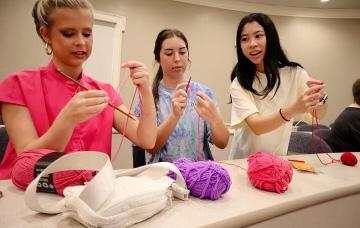





campus organizations has improved her college experience.
“At first, it was difficult to find my footing, but I think that not joining a sorority was just a small portion of why I felt that way,” Byrd said. “Almost all of my close friends are in a sorority, and I don’t think it puts a clear divide between us at all. I feel extremely welcomed on campus, and spring semester has been so much better because I think we are all more comfortable where we are and in our friendships.”
For individuals who are not involved in campus clubs, academic departments and their related organizations offer other avenues for students to find belonging.
Adam Maatallah, a freshman international studies and public policy leadership double major, lauded how his campus involvement has allowed him to build community.
“I have mainly found my community on campus through getting involved on campus and the peers I’ve met through my degree path,” Maatallah said. “I am involved with the Croft Institute, the Trent Lott Institute and the Honors College, along with the Associated Student
Body, UM Voting Coalition, Leadership and Engagement Ambassadors and more. My involvement on campus has really shaped who I’ve made connections with, who I hang out with outside of doing school work and who I look up to as role models.”
Initially, Maatallah was afraid he would not find this community.
“Coming to the university, I was nervous that I would be rejected by my peers and somewhat looked down upon in the eyes of the Oxford community,” Maatallah said.
Despite these initial fears, Maatallah is confident that he has found his people.
“Essentially, what I found difficult was making sure I was going to be able to meet the right people and those who would accept me for who I am,” Maatallah said. “However, I quickly realized that there were more people just like me, with the same fears, who were hoping to find a community that didn’t match the one Oxford and Ole Miss are known for. I quickly created connections with these people and have made friendships that exist among people of many different backgrounds at this school.”



ACROSS 1- Comic Foxx; 5- Univ. recruiting group; 9- ___ avis; 13- Dies ___; 14- Gumbo pods; 16- Greek vowels; 17- Highland hats; 18- Pan-fry; 19- Bottle part; 20- Egyptian cobras; 21- Admiral’s affirmative; 22- English river; 24- Messes up; 26- Molecule part; 27- Atomize; 29- Had faith; 33- Like a chimney sweep; 34- Achy; 35- Comic Carvey; 36- Timecard abbr.; 37- Studio sign; 38- Actor Chaney; 39- Bit of gossip; 41- ___ majesty; 42- Designer Simpson; 44- Small parrot; 46- Madonna role; 47- Equipment; 48- Pink-slips; 49- Give, as homework; 52- Make lace; 53- Cushions; 57- Sir Guinness;
58- Boîte ___; 60- In ___ of; 61- Israeli round dance; 62- Cookwear; 63- Zip-___-Doo-Dah; 64- Marine mammal, secure something; 65- Circus structure; 66- American football measure;


DOWN 1- Meter maid of song; 2- Notable periods; 3- Moist; 4- Final course; 5- Series of prayers; 6- Green-lights; 7- Faithful; 8- House pet; 9- Gave a new title; 10- Up and ___!; 11- Speed contest; 12- Seeks permission; 15- Pioneer; 23- ___ polloi; 25- Narrow beam of light; 26- Eagle’s nest; 27- In a way, informally; 28- Riddle; 29- Brag; 30- Hired parker; 31- ___ Gay; 32- “Great” dog; 33- Vessel; 34- Look of disdain; 37- 1992 David Mamet play; 40- Like Harry Potter’s abilities; 42- Hail, to Caesar; 43- Show; 45- Beer barrel; 46- Scope; 48- Brother of Moses; 49- Sounds of pleasure; 50- ___ gin fizz;
Antitoxins; 52- Grow weary;

NATE DONOHUE thedmfeatures@gmail.com
For most Ole Miss Football fans, the end of April is a quiet time of year — the Grove Bowl Games have come and gone, and the team will not return to action until the game against the Furman Paladins on Aug. 31. But for others, football is still in-season.
Freshman sports administration major Dallas Randall is a manager for the Ole Miss Football Team. For the Hernando, Miss., resident, being a football manager runs in the family.
Randall’s grandfather was a manager for the Rebels when Ole Miss won its last college football national championship in 1962. However, the application process for becoming a football manager as a student at the University of Mississippi requires more than just family ties. The team has about 30 managers, and when Randall applied, the positions had nearly reached capacity.
“There’s a lot of people that fill out applications and want this job. … I didn’t think I was going to get this opportunity. But I got lucky,” Randall said. “(The
coaches) were nice enough to let a few more freshmen slide in.”
Randall helps set up the field before practice and cleans up after practice. This means he must wake up around 5 a.m. every morning and stay at the facility until practice concludes, which is typically around noon.
Although Randall devotes many hours to the football team, he said he is used to budgeting his time. Randall played basketball and ran track and cross country in high school before coming to the university.
“It’s translated from high school,” Randall said. “I was a three-sport athlete, so I’m used to managing my time.”
Though Randall is only a freshman, he was fortunate enough to be on the field as Ole Miss played against Vanderbilt, Louisiana-Monroe and Mississippi State last season.
His favorite game last season was the Peach Bowl in Atlanta.
“That was probably the most memorable (moment) from this past season,” Randall said. “Getting to stay in the (team) hotel … it was an awesome experience.”
Since the team’s spring practice has concluded, this is a light-
er time of year for managers, as players practice only a few times a week. During the late summer and fall, however, the team will resume practices every day. Though managers are not required to return to campus to help with summer practices, Randall said that he plans to do so.
During practice, Randall works with the safeties. Though he hopes to explore other position groups over the next few seasons, he says that he enjoys where he is now.
“I’ve met a lot of cool players (and) a lot of different personalities,” Randall said. “It’s fun getting to interact with them.”
Randall said his favorite part of being a manager is being able to build relationships with the players.
“Coming into this whole thing, I didn’t know if I was going to form friendships. I thought we were going to be more like coworkers, but now I’ve actually built connections with these guys,” Randall said. “Even after practice, we hang out.”
Randall said that working on the sidelines, often holding first down markers, has given him an up-close view of

the Ole Miss Football Team.
“I actually get to see (Jaxson) Dart in action,” Randall said. “I see a lot of really cool plays. Not a lot of people get to see (what happens) behind the scenes.”
Randall offered a few
words of advice to aspiring football managers.
“Keep pushing,” Randall said. “Networking is everything. A lot of people want this job. Don’t take it for granted.”
NATE DONOHUE thedmfeatures@gmail.com
University of Mississippi Head
Football Coach Lane Kiffin boasts an impressive track record with 34 victories in the four years he has been leading the Rebels. While it is hard to find anyone in the SEC who has not heard of Juice Kiffin’s legendary dad, often the work of other coaches who contribute significant hours to Ole Miss’ success on the field goes unnoticed.
Among them is Cord Sparkman, a student coach for the Ole Miss Football Team.
The junior economics major from Austin said that his high school coaches were instrumental in helping him earn this position.
“(The coaches) would buy me lunch a couple of times a week, and I would (watch) film for them, since they knew I wanted to get into (coaching),” Sparkman said. “So they helped me get experience.”
Sparkman was also a quarter-
back in high school, which helped him become familiar with the game. His coaches were ultimately able to connect him to Matt Lindsey, the former general manager for the Ole Miss Football Team, which led to a student coaching position.
Sparkman works with the defensive backs — primarily the safeties, but occasionally the cornerbacks, as well. Part of his role involves watching film and taking notes.
“We’ll run 100-150 plays on a big day,” Sparkman said. “I’m responsible for typing what we ran (each play). ... Starting around one o’clock, we’ll watch (film) together as a staff, and then I mark down our corrections.”
During the fall, when football is in season, Sparkman works long hours — reporting to the practice facility around 6 a.m. and staying until at least 9 p.m. Some nights, Sparkman stays until past midnight.
In the offseason, Sparkman’s hours are lighter, yet still demanding. He begins working every day around 7:30 a.m. and typically stays until 5 p.m., clocking out briefly throughout the day when he has class. Sparkman agrees that balancing school and social life with his position as a student coach is often difficult.
“It feels like I’m juggling three balls, and a lot of the time I’ve dropped one,” Sparkman said.
Sparkman schedules his more difficult classes for the spring semester because the fall semester is so busy.
The long hours are not with-
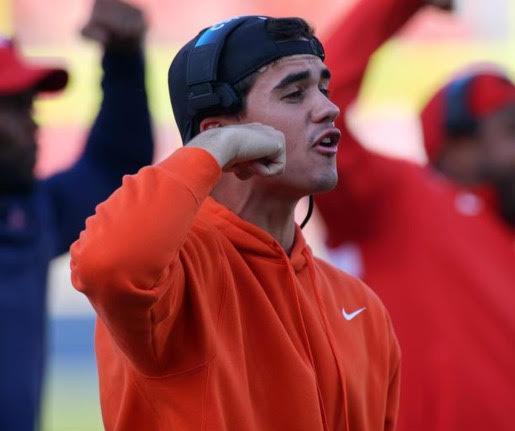
out reward. Not only is Sparkman on the field for every game — home and away — but he is also responsible for giving the hand signals on the sidelines that indicate to the defense what blitzes and coverages to run. In fact, it is Sparkman who comes up with the signals in the first place.
“I’ve been doing that since my sophomore year,” Sparkman said. “There’ll be me and one or two other guys (doing the signals) just so that (other teams) don’t steal (the signs).”
Sparkman’s favorite moment as a coach came during the 2021 season, when the Rebels played the Tennessee Volunteers in Knoxville. The game was made notorious by
Tennessee fans who, dissatisfied with Ole Miss’ victory, hurled beer bottles and golf balls onto the field.
“The game had to stop for 30 minutes,” Sparkman said.
“I still have a Jameson bottle someone threw at me.” Sparkman plans on graduating next December, as there are typically coaching positions open in January and February each year.
His dream is to land an offensive coordinator job either in the NFL or on a high-profile college team.
“Everything I do talking to people (is) now (directed toward) making that step at some point, whether it’s potentially getting a job in the NFL next year (or) in the next three to four years,” Sparkman said.
REN
HITEthedmopinion@gmail.com
As the adage goes, religion and politics are two sensitive topics to avoid in conversations. However, on college campuses there is no shortage of discourse between people with differing views.
Our beloved flagship institution is, at times, especially fond of political discussion. We often welcome politicians and leaders to our campus with open arms, show them great hospitality and introduce their followers to the eighth wonder of the world — the Velvet Ditch — otherwise known as Oxford, Mississippi.
Something Trent Lott Leadership Institute students, Associated Student Body senators and The Daily Mississippian opinion editor might finally agree on is the University of Mississippi’s political cognizance.
Religion is an equally sensitive topic. It is a pillar of society that influences everything it touches. Despite this, conversations surrounding
Opinion Policies:
religion and belief are often met with little deliberation and intentionality on campus.
Why is it that the furthest public religious deliberation seems to go is students arguing with the self-proclaimed preachers who stand on the Union Plaza and inform us of our reserved spot in hell due to our attendance at a university?
While there is no easy answer to this question, Cliffe Knechtle showed this week that there is room for positive, religious debate.
Religious organizations and leaders can take away a lot from Knechtle and his visits to college campuses nationwide. One look at his accounts and content, you’ll find overwhelmingly positive feedback and engagement despite the difficult nature of the conversations at hand. Of course, online statistics and perception are often only a part of the story. Of course there are prejudiced, controversial groups with an online following well into the thousands — like the Moms for Liberty.
The thing Knechtle and his

team seem to have perfected is the art of delivery. Even though Knechtle has heated moments, his delivery is often respectful and rooted in theology while also being mindful of the world we live in today — some-
thing that is increasingly rare.
Justice Rose is the opinion editor. He is a junior from Madison, Miss.
Ren Hite is a senior journalism major from Jackson, Miss.
It’s often not what you say, but how you say it — especially when this generation of college students prioritizes accountability and inclusion more so than other generations have in times past.
Columns do not represent the views of The University of Mississippi or The Daily Mississippian. The Daily Mississippian welcomes letters to the editor, which should be emailed to thedmopinion@gmail.com. Letters should be no longer than 300 words. They may be edited for clarity, brevity and libel. Third-party letters and those with pseudonyms or no name will not be published. Letters are limited to one per individual per month. Letters should include contact information, including relationship to the university, if applicable.
• Former Special Agent with the Federal Bureau of Investigation (FBI).
• Former Special Agent with the Federal Bureau of Investigation (FBI).






• Practiced at his privately owned law firm for 45 consecutive years - located at the same place, being the Oxford Square, Downtown, Oxford, Mississippi.
• Still practicing at his privately owned law firm for over 50 consecutive - located at the same place, being the Oxford Square, Downtown, Oxford, Mississippi.
• Taught the Mississippi DUI Law and 5 different Criminal Law and Criminal Procedure courses each and every semester at the University of Mississippi for 29 consecutive years.
• Taught the Mississippi DUI Law and 5 different Criminal Law and Criminal Procedure courses each and every semester at the University of Mississippi for 29 consecutive years.
• A member of the Chancellor’s Trust at the University of Mississippi since 1981.
• A member of the Chancellor’s Trust at the University of Mississippi since 1981.
• Former Municipal Prosecutor for the City of Oxford, Mississippi for over 6 years.
• Former Municipal Prosecutor for the City of Oxford, Mississippi for over 6 years.
• Former Municipal Court Judge for the City of Oxford, Mississippi for 8 years.
• Former Municipal Court Judge for the City of Oxford, Mississippi for 8 years.
• Former Vice President and President of the Lafayette County Bar Association; member of the Mississippi Bar Association, etc.
• Former Vice President and President of the Lafayette County Bar Association; member of the Mississippi Bar Association, etc.
• Appointed by the Mississippi State Bar to the Mississippi Commission on Attorney Ethics and Attorney Violations of the Canon of Ethics and All Mandatory Rules concerning the Practice of Law. Occupied the positions of Vice Chairman and Chairman and served for 18 years.
• A Founding Member of the National College for DUI Defense conducted at Harvard Law School.
• Appointed by the Mississippi State Bar to the Mississippi Commission on Attorney Ethics and Attorney Violations of the Canon of Ethics and All Mandatory Rules concerning the Practice of Law. Occupied the positions of Vice Chairman and Chairman, served for 18 years.
• A Founding Member of the National College for DUI Defense conducted at Harvard Law School.
• Selected as one of the Top 50 DUI Attorneys in Mississippi by the National Advocacy for DUI Defense.
• Selected as one of the Top 50 DUI Attorneys in Mississippi by the National Advocacy for DUI Defense.
• Selected as one of the Top 10 Best Attorneys of Mississippi in for Client Satisfaction Award by the American Institute of DUI/DWI Attorneys.
• Selected as one of the Top 10 Best Attorneys of Mississippi in for Client Satisfaction Award by the American Institute of DUI/DWI Attorneys.
• Selected as one of the Top 100 Trial Lawyers by the National Trial Lawyers Organization.
• Selected as one of the Top 100 Trial Lawyers by the National Trial Lawyers Organization.
• Recipient of the DISTINGUISHED AWARD OF MERIT for 1989 from the Mississippi State Bar given to one Attorney in the State each year for outstanding contributions to the practice of law.
• Recipient of the DISTINGUISHED AWARD OF MERIT for 1989 from the Mississippi State Bar given to one Attorney in the State of Mississippi each year for outstanding contributions to the practice of law.
• Voted “Best Attorney in Oxford, Mississippi” in the Grove’s Choice Awards.
• Member of the American Association of Premier DUI Attorneys
• Member of the American Association of Premier DUI Attorneys
• Member of the National League of Renowned Attorneys - Top 1%
• Member of the National League of Renowned Attorneys - Top 1%
• Voted “Best Attorney in Oxford, Mississippi” in the Grove’s Choice Awards.
• Awarded the United States Congressional Medal of Distinction by RNCC.
• Awarded the United States Congressional Medal of Distinction by RNCC.
• Member of the American Jurist Institute - Top 10 DUI/DWI Attorney for Mississippi
• Member of the American Jurist Institute - Top 10 DUI/DWI Attorney for Mississippi
• Selected by the Attorney and Practice Magazine as one of Mississippi’s Top 10 Attorneys, et cetera. Since
• Member of the American Society of Legal Advocates - Top 100 Criminal Defense Lawyers in the State of Mississippi
• Member of the American Society of Legal Advocates - Top 100 Criminal Defense Lawyers in the State of Mississippi
• Selected by the Attorney and Practice Magazine as one of Mississippi’s Top 10 Attorneys, et cetera.